Lack of Croatian Nautical Tourism Organisation as Trogir Suffers
May the 9th, 2023 - Trogir, which sits close to Split in Central Dalmatia and is one of the many Croatian towns under UNESCO protection, is suffering due to a lack of Croatian nautical tourism organisation. This beautiful town, the layout of which dates way back to the Hellenistic period, is struggling considerably with a mini cruiser problem.
As Poslovni Dnevnik writes, the winter-time accommodation of large tourist ships is becoming an increasing problem all over the Croatian Adriatic, especially in Dalmatia. In Trogir, people generally aren't very happy that every year, more and more such boats are moored at their waterfront in winter, pointing to an issue with Croatian nautical tourism organisation in the area. Locals have even started joking that the Trogir waterfront has become the only shipyard under UNESCO protection in the entire world, as reported by HRT.
All winter long, half of the long Trogir waterfront (riva) is occupied by tourist boats moored in several rows. It has been like this for years now, but the ships are getting bigger and there are more and more of them gradually appearing. ''You can't see Ciovo from the waterfront anymore, and you can't see the city from Ciovo,'' say Trogir's residents.
"In the winter, it has now really exceeded every measure. There's also the problem that in winter the waterfront transforms into a "mini shipyard" out in the open. Everyone is there carrying out some service or painting their vessels. The UNESCO core of the city is certainly not the place for such a thing," said the mayor of Trogir, Ante Bilic.
In order to make sure there is no confusion, the people of Trogir aren't against large tourist boats being there, quite on the contrary, they've become an important part of the tourist offer. However, they would like to see fewer of them in the winter season, and on the other hand, to have as many of them as possible in the summer. It's also worth noting that this lack of organisation from the Croatian nautical tourism sector is even more strange given that Trogir is more or less completely surrounded by a series of marinas and harbors.
"We need to find a common language, because sailing is one of the most important segments of tourist activity in Trogir. At last year's Days of Croatian Tourism, Trogir was declared the most successful destination within the scope of Croatian nautical tourism,'' explained the director of the the Tourist Board of Trogir, Marin Piveta.
The county port authority, which charges people for winter mooring in Trogir, is expected to find an alternative location for the very problematic mini-cruisers, but they have stated that this will not be possible for at least another two to three years until two new ports are built in the Municipality of Dugi Rat. The home port of the largest tourist fleet on the Adriatic in Krilo Jesenice has long been too small and as such these ships are located at winter berths throughout Dalmatia.
"The number of ships that are looking for both winter and annual berths is increasing. With our infrastructure being as it currently is, we can't keep up with the construction of new ships, we're trying to reduce the increasing number of vessels in our ports. We've given the people from Krilo several options, especially now that the works are starting there, and that's a ferry port in Stari Grad that can accommodate a larger number of vessels on an annual basis," explained the director of the County Port Authority, Domagoj Maroevic.
Professor Ivo Babic from Trogir, the former rector of the University of Split, asked a long time ago in his writings just how wide the Adriatic actually is and whether there is a limit to the touristic exploitation of the area, including that on the Trogir waterfront.
"This is just a small negative aspect of tourism. As a young man, I was an apologist for tourism, I saw in it a chance for old cities, for revitalisation, but now I see that mass tourism is really dangerous for the environment and for the lives of the local population. I'd use a modern term - commercialisation of the world. Everything is being commercialised, from national parks onwards," claimed Babic.
He doesn't want to move out of Trogir's historic core, even though he says that in the summer it became unbearable, given that the town has been turned into a large inn.
"I wouldn't like to spread pessimism but I really don't see a bright future in terms of ecology and the environment. I'm afraid that capitalism is the natural state of the world, that maximum expansion suits the people - as much as is possible in a shorter period of time and with the least possible effort," he added.
Mass tourism threatens everyone in various ways, the growth in the number of large tourist ships is only a small part of the whole story. Is sustainable tourism even possible? As for the Trogir waterfront, it seems it will continue to be occupied by mini-cruisers over the coming winters.
For more, make sure to check out our dedicated news section.
Choose a Bike Project Reaches Trogir, New Trogir Bike Paths Coming
July the 23rd, 2022 - The Choose a Bike!/Biraj Biciklu! project has reached yet another coastal Dalmatian city - Trogir. Some new Trogir bike paths are set to be arranged as part of the project which is rapidly spreading and resulting in much needed environmental change.
As Morski writes, as part of the wider European Union (EU) project "Choose a Bike!", the first system of public bikes in Trogir was presented recently on the Trogir waterfront near the Kamerlengo tower. There are three terminals with ten electric and ten classic bicycles, and work on the first of the Trogir bike paths is now nearing completion.
This praiseworthy project connects the wider Split area by implementing a total of 41 terminals with 242 electric and classic bicycles. In addition to the areas of Trogir, Podstrana, Klis and Dicmo, through this project, bikes will also be made available in nearby Kastela, Solin, Dugopolje, and the existing system in the City of Split itself will also be expanded.
''We can be happy and satisfied that Trogir has become part of this project and that by opening the first three stations of the public bicycle system, we've taken the first step towards a more sustainable way of urban mobility owing to which we'll be less dependent on cars. This is a healthier and cleaner variant of transportation for our residents and our guests, especially when we know how busy Trogir can get during the summer months. Now someone will sit on a bike in Arbanija and get to Kula on two wheels, and those in slightly better shape will be able to cycle Kastela or Split, and then go the same way back. Every car less in the city centre means a lot,'' said Trogir Mayor Ante Bilic.
The points with public bicycles on offer to the public in Trogir are located along the waterfront near the Kamerlengo tower, at the entrance to the city (the Brigi-Lokvice embankment) and in Arbanija (Sv. Kriz).
As far as Trogir is concerned, a significant benefit of this project is the construction of the first of the Trogir bike paths with a pedestrian path running alongside it, which is 450 metres long and is part of the promenade and the Brigi-Lokvice coastal belt, and according to the mayor of Trogir, this path should be opened to traffic in the next month and a half.
The total value of the project stands at 13,609,435.83 kuna, and it was co-financed by the European Union from the Cohesion Fund with 10,893,396.68 kuna, as part of the ITU Call "Urban Mobility - The Development of Public Bicycle Systems in the Urban Agglomeration of Split''.
For more, make sure to check out our dedicated lifestyle section.
2022 Trogir Tourist Results Significantly Better Than Those from 2019
July the 18th, 2022 - The 2022 Trogir tourist results so far have been excellent, so excellent in fact that they have outdone the results thid Dalmatian town acheived back in the pre-pandemic, record year of 2019.
As Morski writes, despite all the adversity and inflation, the 2022 Trogir tourist results so far have been much than those recorded back during the record-breaking year of 2019. In the first ten days of July, a difference of about 5 percent has been noted. Next week, when the internationally recognised Opera Selecta ends, even better results are expected.
Not even the scorching hot sun can stop the hordes of guests flocking into this Croatian UNESCO city, but that doesn't mean there aren't many people still worried about the high prices as a result of ongoing inflation pressures.
''Over the first ten days of this month, we recorded a 6 percent increase in terms of overnight stays and a 5 percent increase in terms of arrivals when compared to the first ten days of July 2019,'' said Marin Piveta, the director of the Trogir Tourist Board.
Trogir is currently playing host to many different types of events which are succeeding in attracting new guests, and the famous Opera Selecta, as a cultural brand of the city with its mega-stars of classical music, is a real magnet for the audience.
''We are especially happy and proud that this year, for the first time, we brought the world-famous soprano Olga Peretyatko to the Republic of Croatia, who will perform in the Kamerlengo Tower on July the 20th,'' said Vinko Buble, president of the "Opera Selecta" Association.
When it comes to the 2022 Trogir tourist results, while already extremely encouraging, everything would be even better if the Scandinavian airlines hadn't started cancelling their flights due to staff strikes as we head into the middle of the very height of the summer tourist season. Owing to this unfortunate event, many would-be tourists from that part of Europe, including Swedes and Norwegians, ended up getting stuck with their luggage at their airports.
About 30 percent of Scandinavians have already cancelled their trips, but most of them still embarked on their adventure, deciding to hit the road instead and drive the long 2,500 kilometres down to the Croatian Adriatic. Their numbers still aren't really so large that they'd would affect the great tourist results being acheived already by Trogir, but after two years of stress due to COVID0-19, travel agencies have once again run into problems, writes HRT.
For more, make sure to check out our dedicated travel section.
Trogir and Opatija Named Most Underrated European Cities
July 18, 2022 - Trogir and Opatija have been listed as two of the most underrated European cities to visit this year. Would you agree?
Luxury and lifestyle travel magazine Conde Nast Traveler has published a list of the 22 most underrated European cities, created by travel experts and writers living in Europe, as a way to sway travelers away from the already busy and uber-popular Paris and Rome. The list thus shines light on 'surprising destinations that will far exceed your expectations' instead.
The list includes small towns in Sweden, lesser-known places in the Baltic states, and, not so surprisingly - two cities from Croatia and one from Bosnia and Herzegovina.
Namely, Trogir and Opatija have been named two of the most underrated cities in Europe.
"Located on a tiny island, Trogir’s Old Town is bursting with charm. Its narrow, ancient streets form a labyrinth lined with medieval town houses. The lively seafront promenade, lined with cafes and restaurants, is abuzz with activity on a summer day. The town also boasts many beautiful and well-preserved buildings from its age of glory between the 13th and 15th centuries. In 1997, its profuse collection of Romanesque and Renaissance buildings earned it UNESCO World Heritage status.
Browse the market, stroll along the Riva, or explore a Venetian fortress—Trogir packs a lot into a small package! Located only about 30 minutes from Split, it is also a perfect alternative for travelers that want to see and enjoy Split but prefer not to stay in a big city. The historic seaside town of Sibenik, Krka National Park, and the ancient ruins of Solin are also located within easy reach," writes Wanda S. Radetti, President of VisitCroatia.com – Tasteful Croatian Journeys.
Radetti continued about Opatija:
"Although today it is often overlooked in favor of cities like Dubrovnik or Split, it is Opatija in the north that is the cradle of tourism in Croatia. Nicknamed “Vienna by the sea” due to its handsome Belle Époque architecture, the Opatija Riviera, a 30-kilometer stretch of land nestled between the wooded slopes of Mount Ucka and the rocky coastline of the Kvarner Gulf, was once the most visited seaside resort of the Austro-Hungarian elite. The area was hailed as a health and wellness retreat, its unique micro-climate offering the ideal ingredients for therapeutic and restorative travel. Still today, Opatija continues its tradition as a center for wellness, attracting visitors seeking to relax and rejuvenate at its numerous spas, enjoying unique treatments and therapies.
Even aside from being a health retreat, Opatija offers much to travelers. The city boasts a number of grand cafes, well-maintained public gardens, tidy beaches, fine hotels, and excellent restaurants. Opatija’s privileged position at the eastern corner of the Istrian Peninsula also makes it the ideal jumping off point from which to explore other areas of Croatia. Within an one-hour drive, you will find yourself in the truffle rich forests of Istria, the green mountains of Risnjak National Park, or the pebble beaches of the Island of Krk."
The list also includes Mostar in Bosnia and Herzegovina, Ohrid in North Macedonia, Tirana in Albania, and places in France, Sweden, Portugal, the Netherlands, Switzerland, Georgia, Latvia, Lithuania, Austria, Italy, Poland, Ireland, Greece, England, Norway, and Spain.
You can read the full list on Conde Nast Traveler.
For more on travel in Croatia, follow TCN's dedicated page.
A Michelin Experience Inside il Ponte - Bridge Connecting People, Food and Wine
July 4, 2022 - On the outskirts of the small but mighty UNESCO city of Trogir, one will find a hidden gem - il Ponte. Take a moment to peek inside and you will find a gastronomic adventure!
A wooden bridge, connecting the old town to il Ponte, is found just a few steps away. This bridge is key for movement and connection in the town and was the inspiration for the name of the restaurant, translated to Italian.
Upon entry, you will find a beautiful summer courtyard that leads to the main hall and outdoor glazed terrace, all overlooking the sea and old town. If you dare, peek downstairs, where you will find an intimate wine cellar below sea level! This corner is the perfect opportunity to appreciate endless Croatian wine labels.
Ivan Ivanisevic
Once you've had the opportunity to wine and dine at this captivating location, the experience can be rounded off by walking upstairs to a 4-star ** luxury room waiting for you.
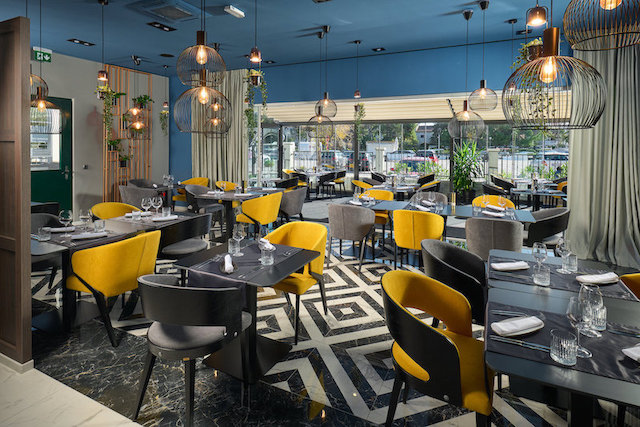
Ivan Ivanisevic
The focus placed on the cuisine is Mediterranean - based on seasonal ingredients and traditional dishes with a modern twist. The ingredients are procured by local farmers, butchers, and fishermen.

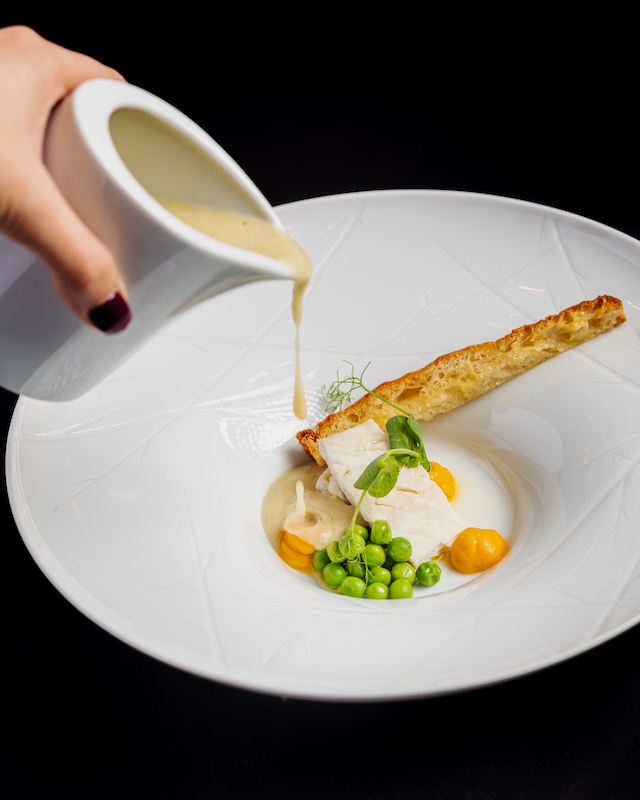

Chef and co-founder of il Ponte, Stjepan Vukadin is a young ambitious man, who has been prominent in the culinary world for some time as one of the best young chefs in Croatia. He always highlights that ingredients always have to be fresh, local, and prepared with respect. In addition to past Michelin recommendations, he is also a member of the jury of Masterchef Croatia – a world-renowned culinary TV show.
Within the first six months since opening its doors, il Ponte has had the honor of receiving a Michelin recommendation for 2022 - Michelin guide Croatia and also been awarded in Gault&Millau guide for 2022 with 2 toques (14,5)
After speaking to the head Chef Stjepan, he has made it clear that his work is underlined by his passion and love for food. He is immensely proud that the Michelin guide has recognised this hard work and passion and looks forward to continuing this journey further.
This Mediterranean fine dining gastronomic experience and getaway is one not to be missed!
For more, check out our lifestyle section.
Property of the Week: Renovated Stone Trogir Property in Heart of UNESCO Old Town
June 16, 2022 - A rare chance to buy renovated Trogir property in the heart of the historic UNESCO Old Town.
Looking for a slice of authentic and historic stone in a very desirable location and close to the action? There are few options which tick all the boxes more than the old town of Trogir.
Truly one of the Adriatic coast's true gems, this UNESCO World Heritage Site is also an old town which is very much keeping the traditions of the past alive, with several master craftsmen still plying their trades within the historic stone walls of the old town.
Not everyone knows that the old town of Trogir is actually a small island, connected to the mainland by bridges,and access to the glorious Adriatic is just metres away, with the Trogir riva a perfect place for morning coffee and soaking up the Dalmatian lifestyle. And with Split Airport and magnificent Split just a bus ride away, there are truly many pluses to being based in Trogir.
And it is not every day that a quality property in the historic centre comes on the market. Over to our friends at Trgostan to introduce this week's property of the week.
Beautiful 300-year-old stone house on 4 floors + mezzanine, located in the heart of the old town of Trogir under the protection of UNESCO, of approximately 120 m2, consisting of living room and toilet on the ground floor, larger bedroom and bathroom upstairs, two smaller rooms and bathrooms on the 2nd floor, and a kitchen with dining area with access to the terrace of 14 m2 and a gallery space / mezzanine above which is used as a working space, reconstructed in accordance with the strictest conservation guidelines, using the highest quality materials, rarely on the market.
For more details, price, and to book a viewing, check out the original listing on the Trgostan website.

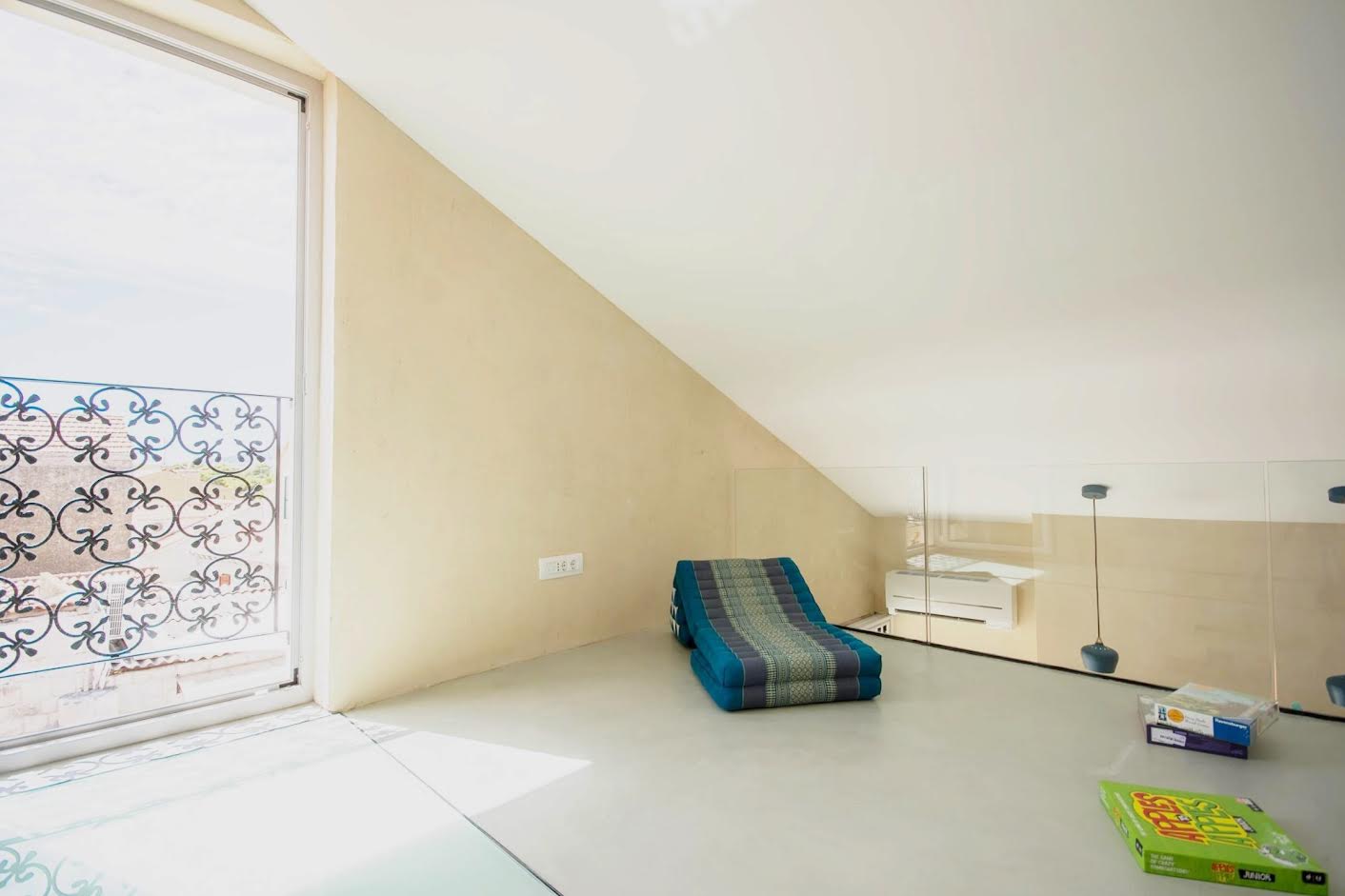
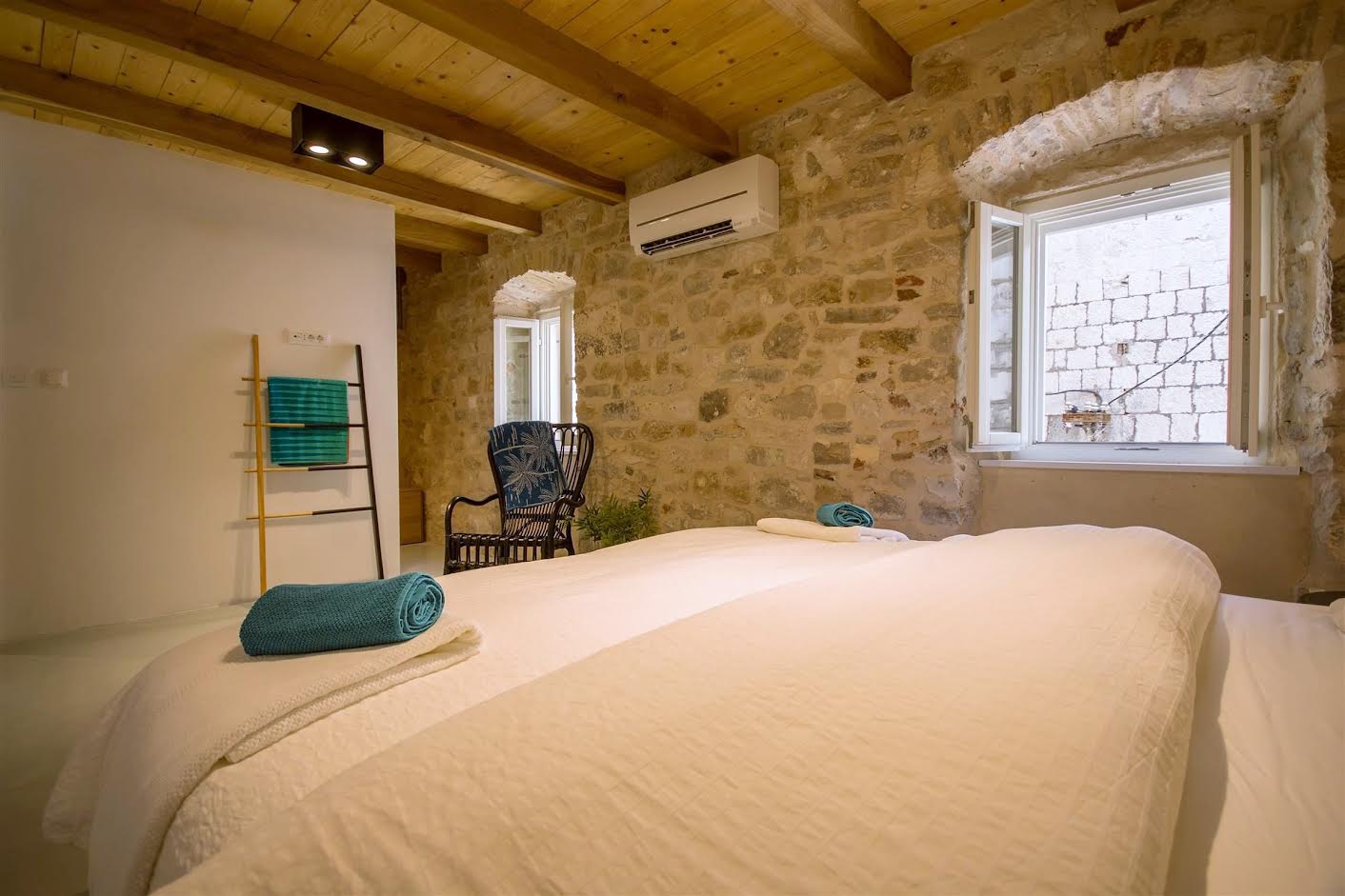
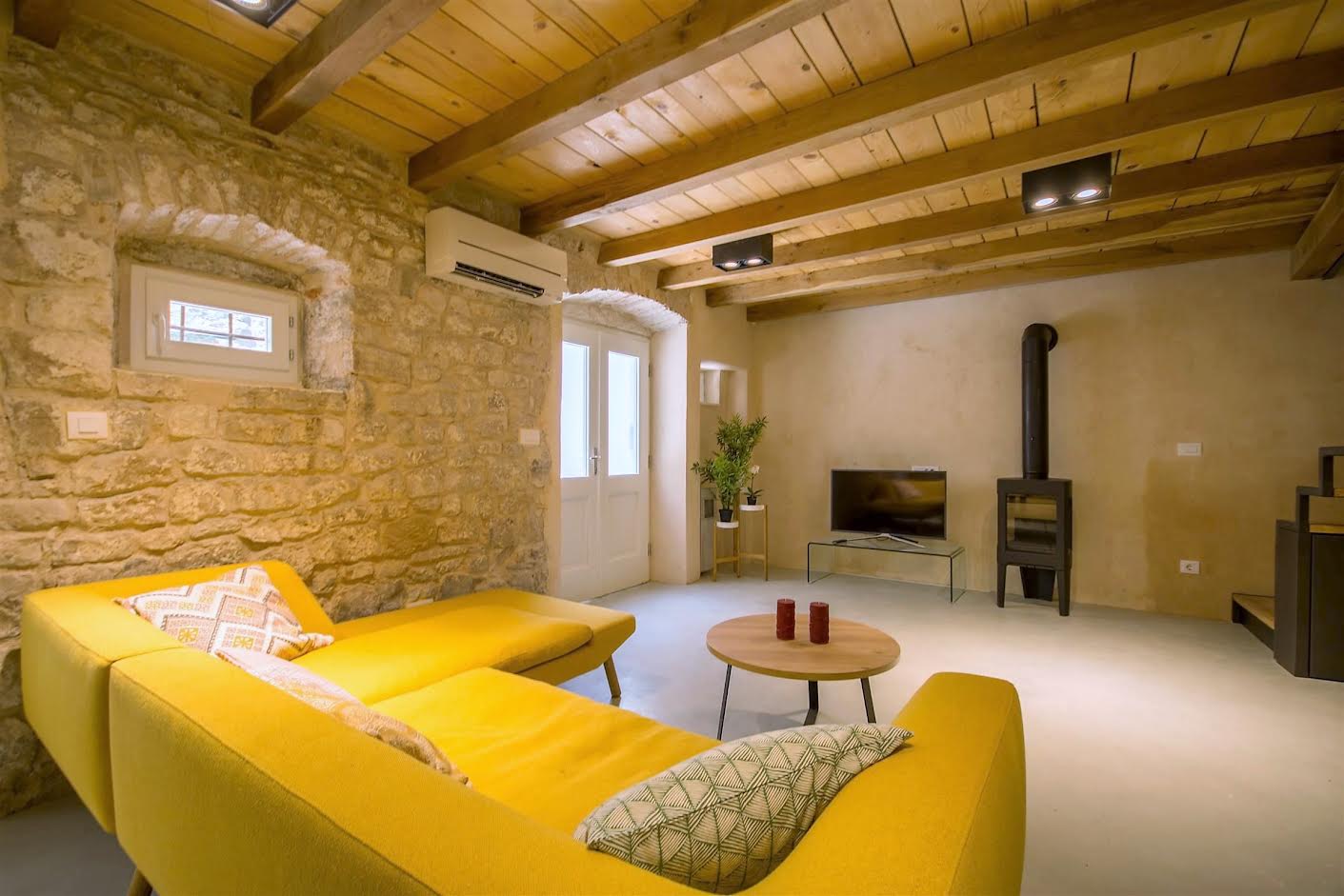
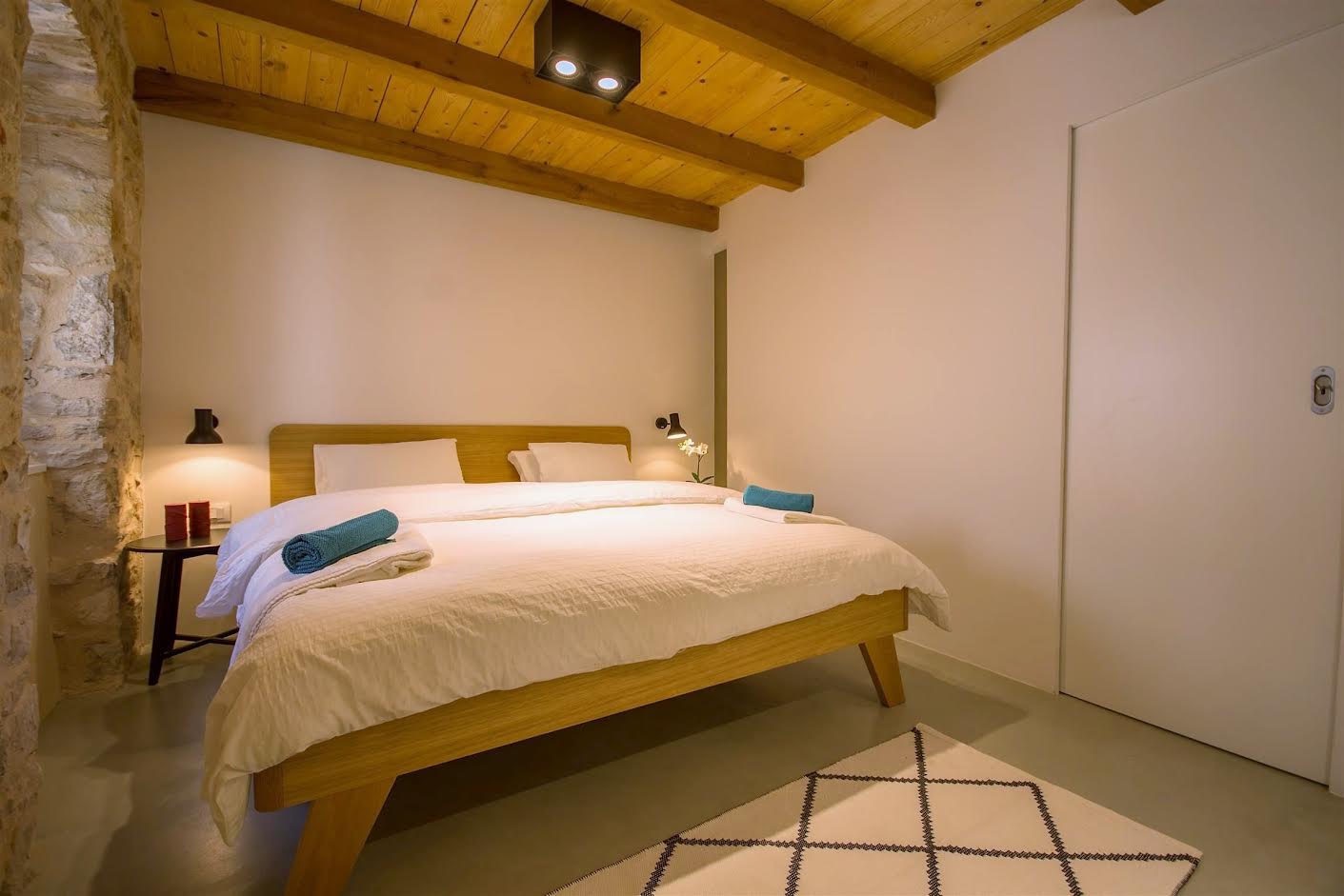
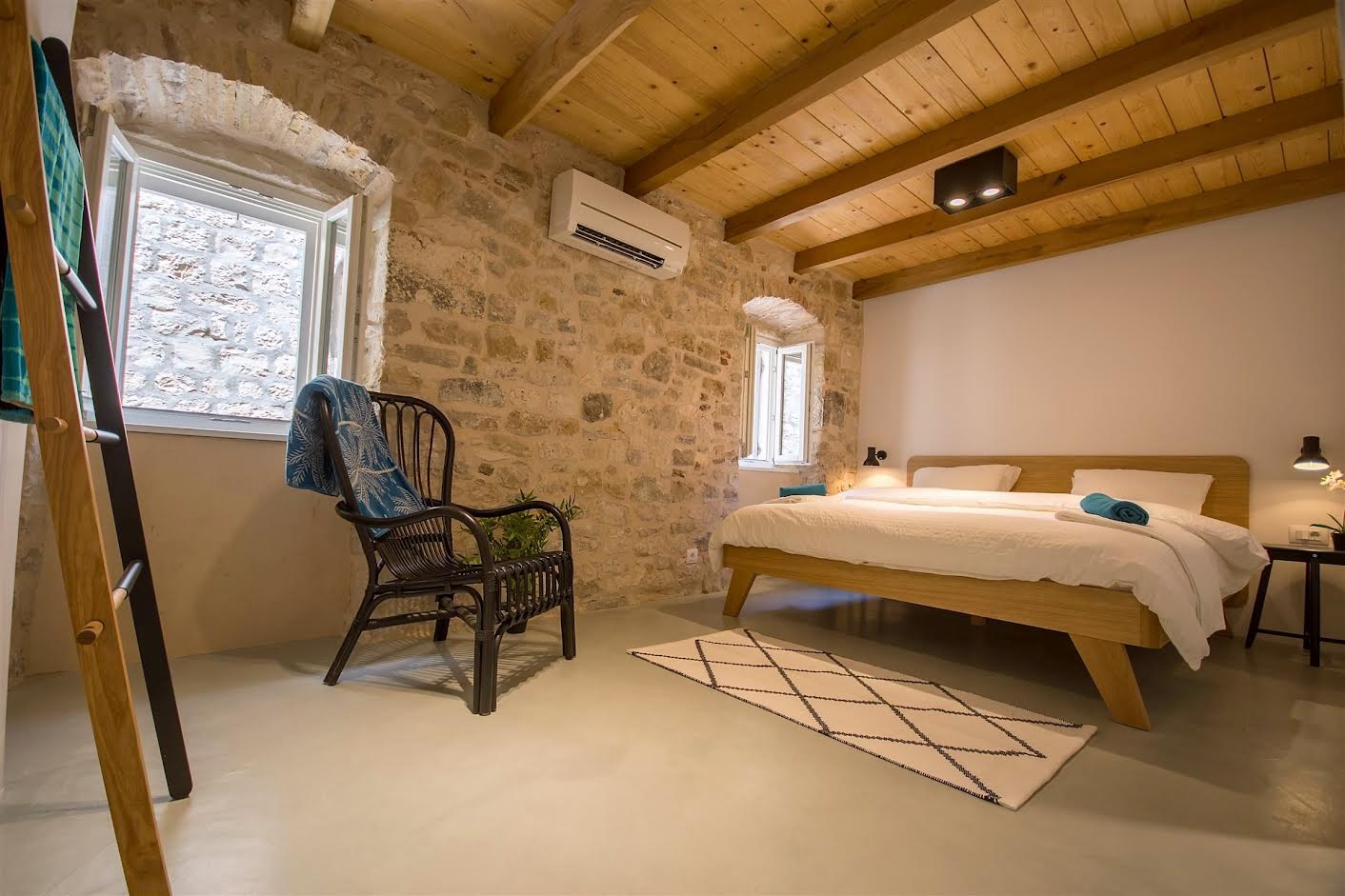
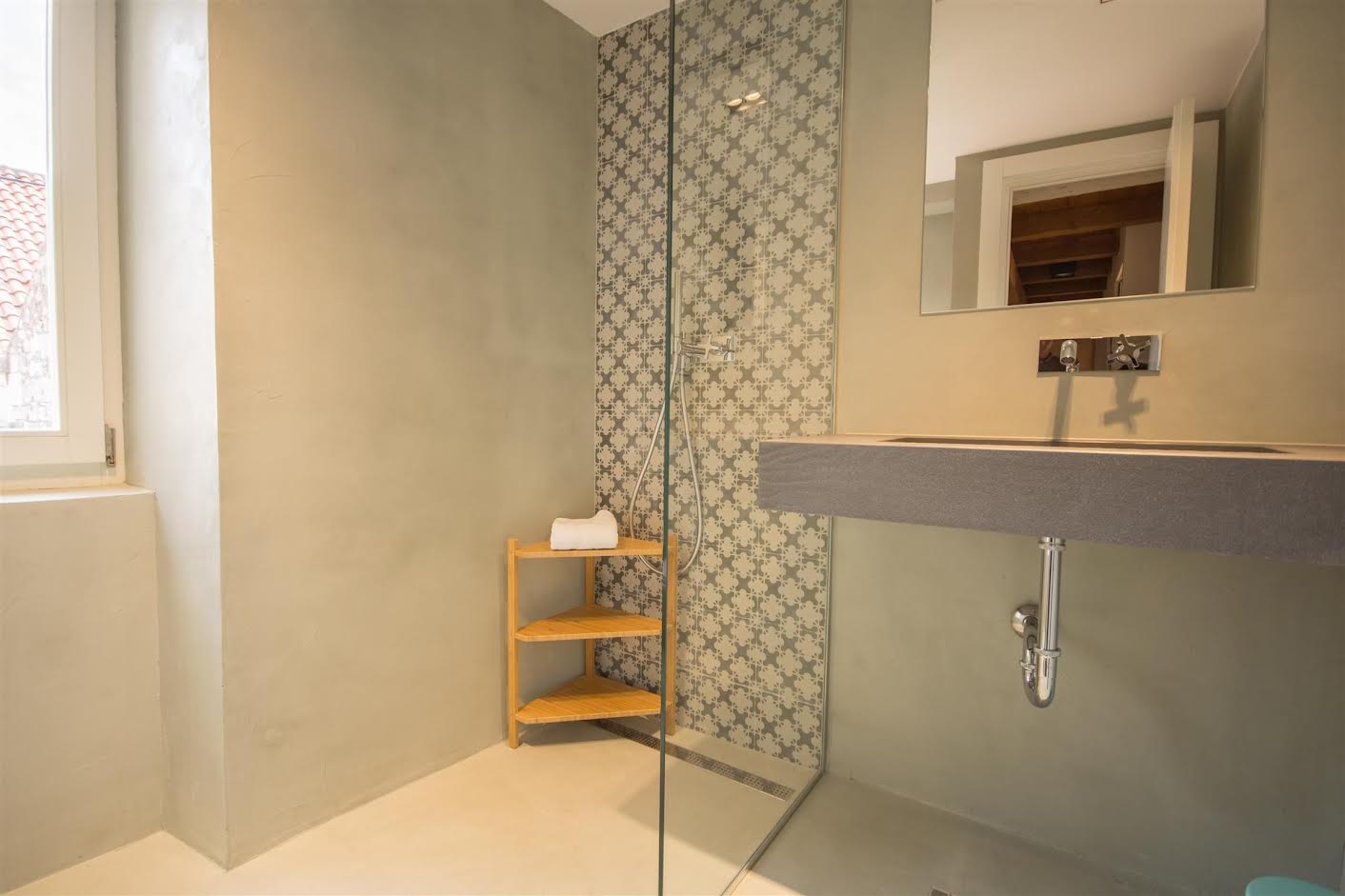


Upcoming 'World's Greatest Sporting Arenas' Series to Feature Trogir's Batarija
June 3, 2022 - Trogir's Batarija football pitch is unique in that it is bordered on three sides by protected cultural monuments - the Kamerlengo Fortress and St. Mark's Fortress on the north and south sides, and the hexagonal stone monument Marmont's Gloriette to the west.
Batarija is the home of the Trogir Football Club, founded in 1912, reports Slobodna Dalmacija.
The unique location and surroundings of Batarija were recognized by the world-famous Cwmni Da production company, which in its four-episode series "The World's Greatest Sporting Arenas" included Batarija where, in addition to the stadium and its unique surroundings, they filmed NK Trogir against NK Omladinac from Vranjica.
Thus, Batarija found itself in the company of some of the most famous stadiums in the world, such as Anfield in Liverpool, Croke Park in Dublin, Olympic Stadium in Seoul, Sapporo Dome in Japan, and many others.
From Korea to the US, Germany, and India, through programs as long as four hours, the story of some of the most prominent sports venues in the world will be told. With dramatic recordings and the greatest production value, the production team travels the world to get to know these spectacular locations.
On their journey, they will discover each stadium's culture, history, architecture, and design and meet the people who bring these great arenas to life. This four-episode series is sponsored by BBC ALBA, S4C, TG4, South Korea's JTV, and China's LIC. The Trogir Tourist Board assisted the production in filming the location and provided other technical and logistical support.
This new series thus positions Trogir high on the list of popular film destinations. Thanks to its unique cultural value, Trogir is an excellent destination for film tourism, and the Tourist Board will continue to work on activities to promote the value of Trogir while attracting and assisting foreign film productions during filming in Trogir.
For more, make sure to check out our dedicated sports section.
Split Destinations You Can Visit Using Public Transport
May 24, 2022 - You can spend a large part of your itinerary in the city centre, but did you know that you can get to know many interesting Split destinations by bus? We're going to show you how.
Whether it is a short visit or for a week, the City of Split can fill your itinerary with activities of all kinds, sights, gastronomic spots, and much more. But what if you feel the need to explore your surroundings? Surely from the window of your plane, shortly before landing, you noticed that Split is much more than just its centre. In the high season, you may want a little respite from the crowds, so why not explore some of the nearby Split destinations? By using public transport, you can save yourself the fees of renting a car to visit these relatively local destinations, as well as the tedious search for parking in the city.

Photo: Ivo Cagalj/PIXSELL
The public transport system in the City of Split is called Promet (Traffic) and its buses can take you beyond the centre. The bus network is divided into four zones, and that is how ticket prices are determined (based on proximity to the very centre). If you're very clear about where you're going, you can buy your tickets at the Tisak stands indicating the area you are going to, or you can also pay the bus driver himself, indicating the exact destination you are going to.
The prices of bus tickets by zone are as follows:
Zone 1: 9 kuna
Zone 2: 13 kuna
Zone 3: 17 kuna
Zone 4: 21 kuna
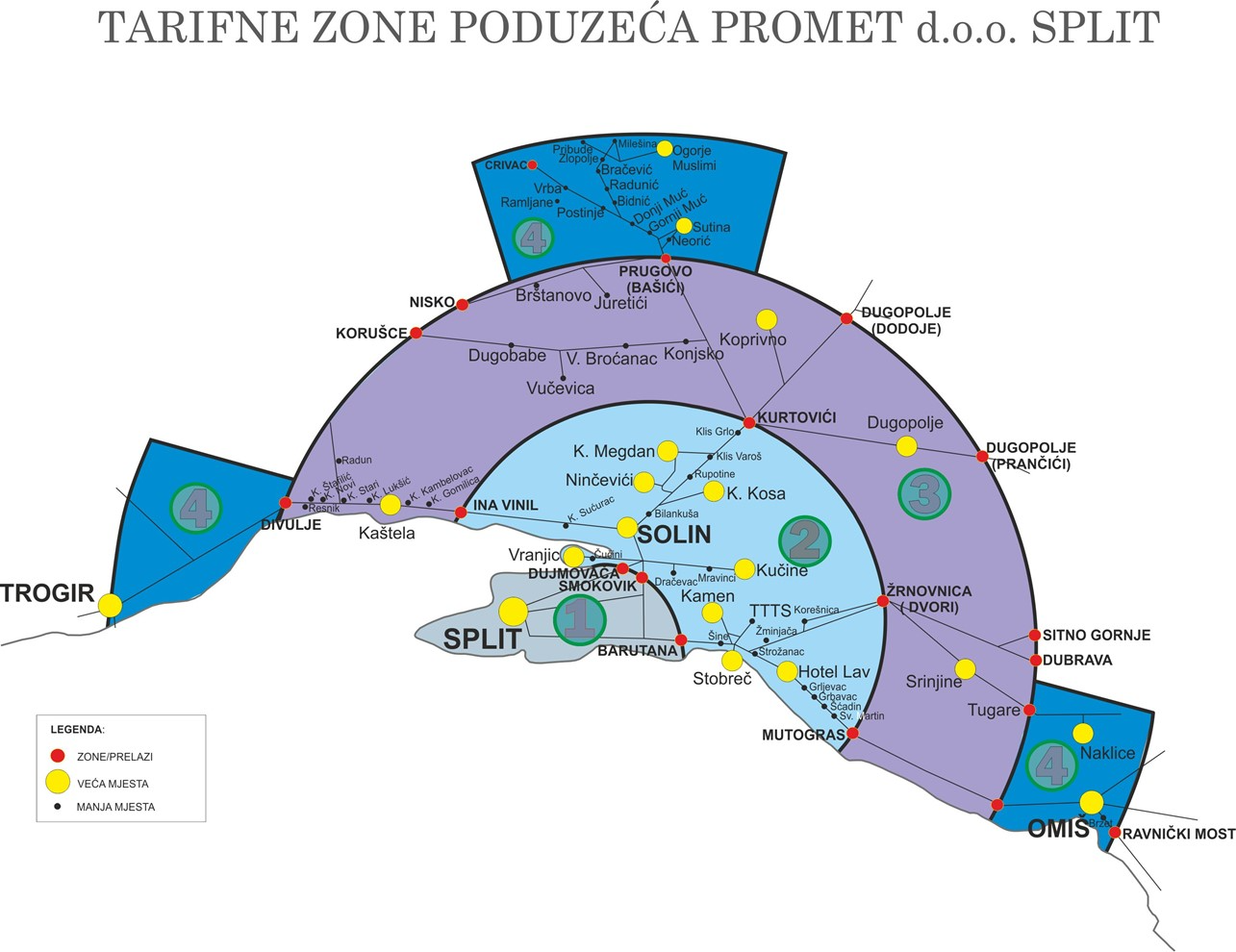
Image: Promet Split
Now, the question is, where do you want to go? Generally, everything in the centre of Split is part of Zone 1. You can choose between beautiful and less crowded beaches, small and picturesque old settlements, or even historical places beyond that zone. The choice is yours. Here are some ideas for Split destinations you can visit in zones 2, 3 and 4 with the city's public transport system.
ZONE 2
Solin
Solin is located very close to the centre, just northeast of Split. Originally called Solana, it was a Greek colony founded in the 3rd century BC, and later a Roman colony. At that time, it ended up becoming the fourth largest city in the entire Roman Empire. For a zone 2 ticket to Solin, you can go ahead and visit its impressive ruins. You'll need to get on bus number 2 (Split - Poljička - K. Sućuraj (Strinje) - Split Airport), or bus number 38 (Split - K. Stari - Resnik).
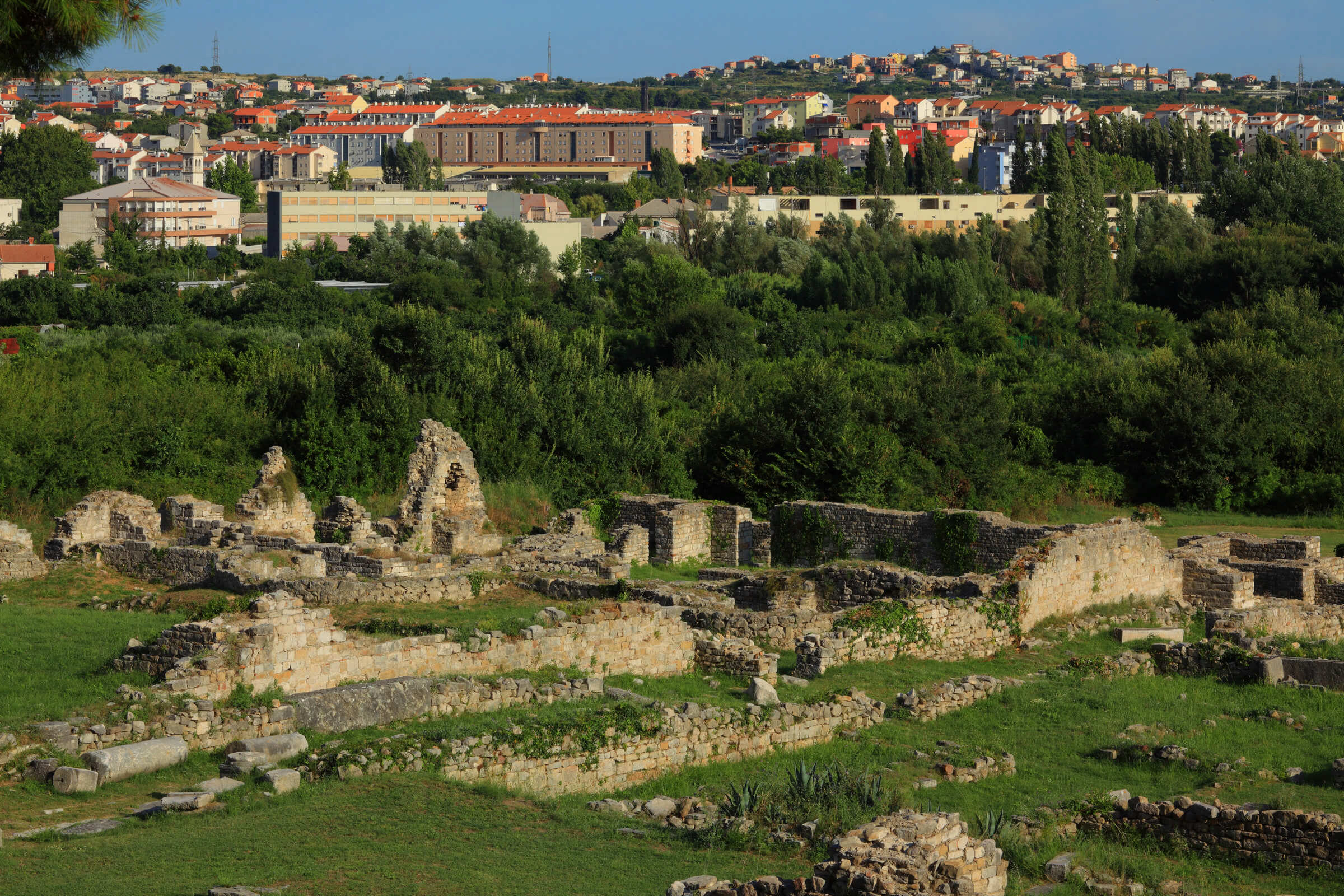
The ruins of Solin. (Photo: Mario Romulić)
Stobreč
On the southern loop of Split zone 2, Stobreč is the first destination you can get to. It's ideal if you are looking for somewhere nearby to relax and with a good number of bars and restaurants. Stobreč also has a golf course, if that's your thing. You'll need to get on bus number 60 (Split-Omiš) or number 25 (Split-Stobreč).

Overview of Stobreč. (Photo: Mario Romulić)
Podstrana
Passing Stobreč, you'll reach Podstrana. Podstrana has a large number of beautiful beaches, with bars and restaurants on them. I always say, if you are looking to enjoy the sea in Split and away from the crowds, go to Podstrana. If you're looking for something other than the beaches, you can also go hiking in the surrounding hills or kayaking on the Žrnovnica river. Did you also know that legends say that Podstrana is where the famous King Arthur could have been buried? You'll need to get on bus number 60 (Split-Omiš) to get here.
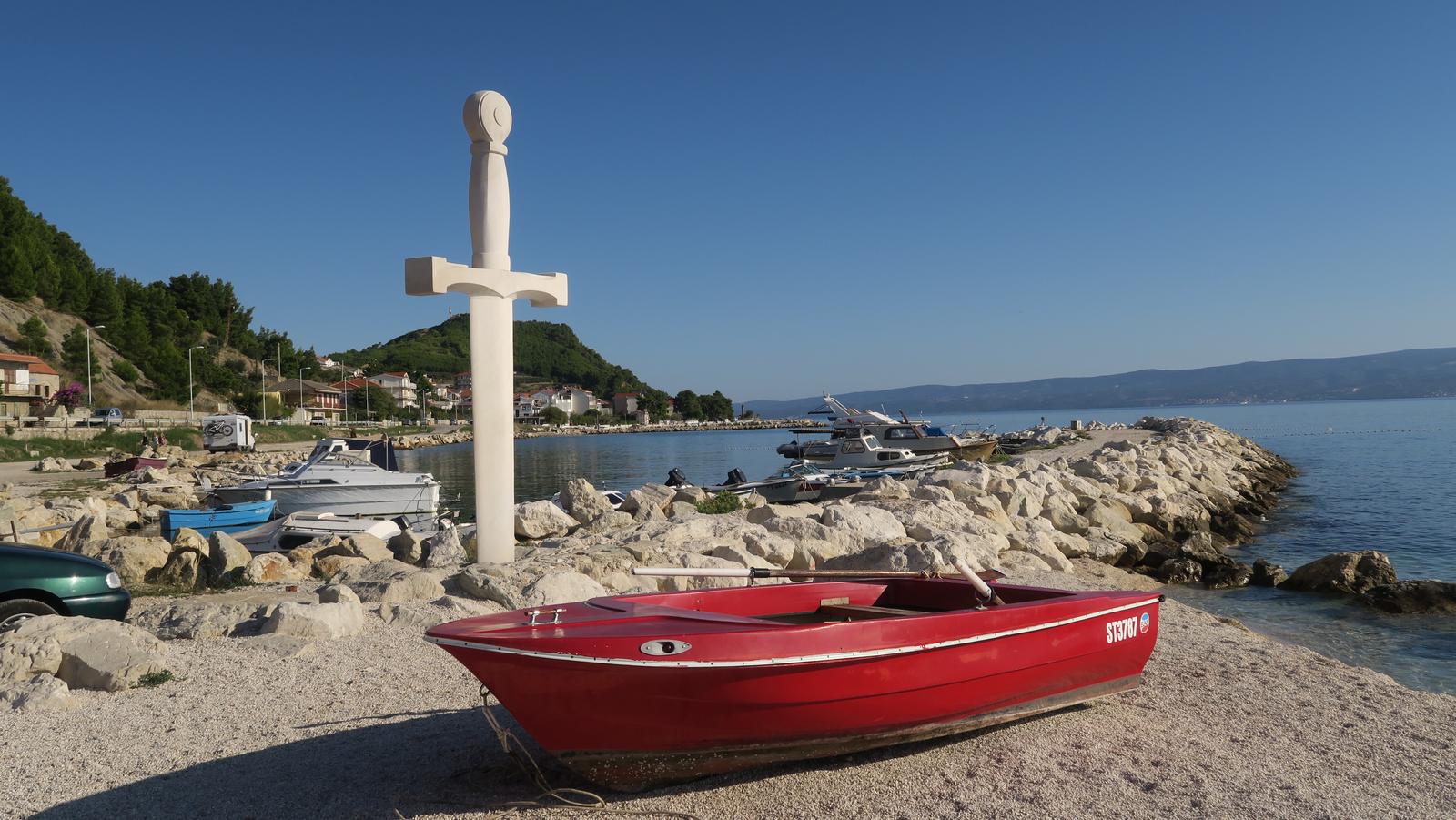
The sword of Artorus, in Podstrana. (Photo: Ivo Cagalj/PIXSELL)
ZONE 3
Kaštela
Please note that there is more than one Kaštela! It won't be something that will have much relevance when paying for your ticket, since they're all in the same area. Kaštela is located northwest of Split, on the way to the airport. No matter which Kaštela you decide to go to, be sure to enjoy its promenades, beaches, and marinas! You'll need to get on bus number 2 (Split - Poljička - K. Sućuraj (Strinje) - Split Airport), or bus number 38 (Split - K. Stari - Resnik).
Krilo
If you pass Podstrana, heading south, you will enter zone 3. There are many places that you can visit almost in succession: Mutogras, Jesenice, Sumpetar, Dugi Rat... Krilo has very nice beaches, as well. You'll need to get on bus number 60 (Split-Omiš).
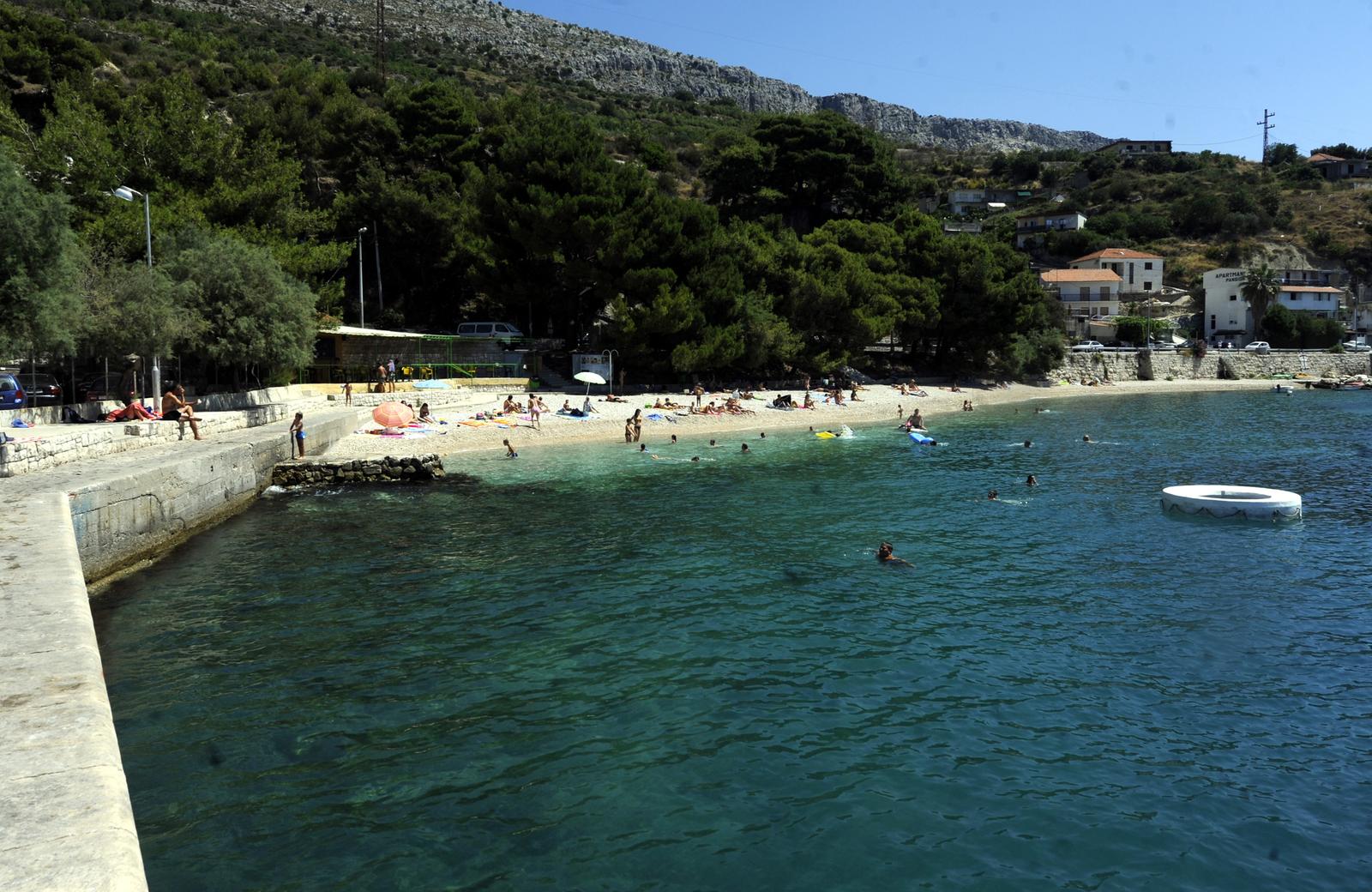
Krilo. (Photo: Tino Juric/PIXSELL)
ZONE 4
Duće
Duće is one of the last destinations in zone 3 to the south. Many continue on to Omiš, but Duće is a place that deserves all your attention for its beautiful beaches and camping sites. You'll need to get on bus number 60 (Split-Omiš).

At the beginning of Zone 4, just before Omiš, you'll find Duće. (Photo: Mario Romulić)
Trogir
Passing the Split Airport, you'll find the very ancient and picturesque town of Trogir. Often regarded as the miniature version of Split, its beautiful promenade and narrow streets will stick in your mind for a long time. A good idea is to find pristine beaches in the bridge-connected island of Čiovo. You'll need to get on bus number 37 (Split - Split Airport - Trogir).

Trogir. (Photo: Mario Romulić)
Omiš
Omiš is one of the most popular and largest towns on the coastal road between Split and Dubrovnik. Just 40 minutes from the center, Omiš is a true jewel of the Dalmatian coast, with beautiful old streets, the Cetina canyon, and wonderful beaches. You'll need to get on bus number 60 (Split-Omiš).

Omiš. (Photo: Mario Romulić)
For more information on Split's bus system, be sure to check the official website of Promet.
For more on travel in Croatia, follow TCN's dedicated page.
Zagreb to Dubrovnik: the Ultimate 10-day Road Trip Itinerary
21 February 2022 - It’s never the wrong time to start planning the perfect getaway to the paradise that is Croatia. We decided to give you a hand in planning the perfect 10-day road trip from Zagreb to Dubrovnik (plus some bonus island time!) that showcases the best the country has to offer.
The best way to discover Croatia is by car, giving you the freedom to go off the beaten path and chart your own adventure around the country, all the way from Zagreb to Dubrovnik.
Before we jump into it, do be aware that most car rentals in Croatia are manual transmissions! Automatic cars are available for rent, though mostly by larger rental companies like Sixt, and are more expensive.
If you’re not a confident driver, no need to worry, there are plenty of private bus companies that run daily trips to most cities and tourist attractions during the high season (June - September). In larger cities such as Zagreb and Split, bus schedules are also available online. Transfers between major ports and the islands are also regularly serviced by ferries and catamarans.
Day 1: Zagreb
Welcome to Zagreb, the capital and largest city of Croatia! Nicknamed the city of museums, Zagreb is home to over a dozen award-winning museums such as the Archeological Museum, with over 450,000 artifacts and monuments.
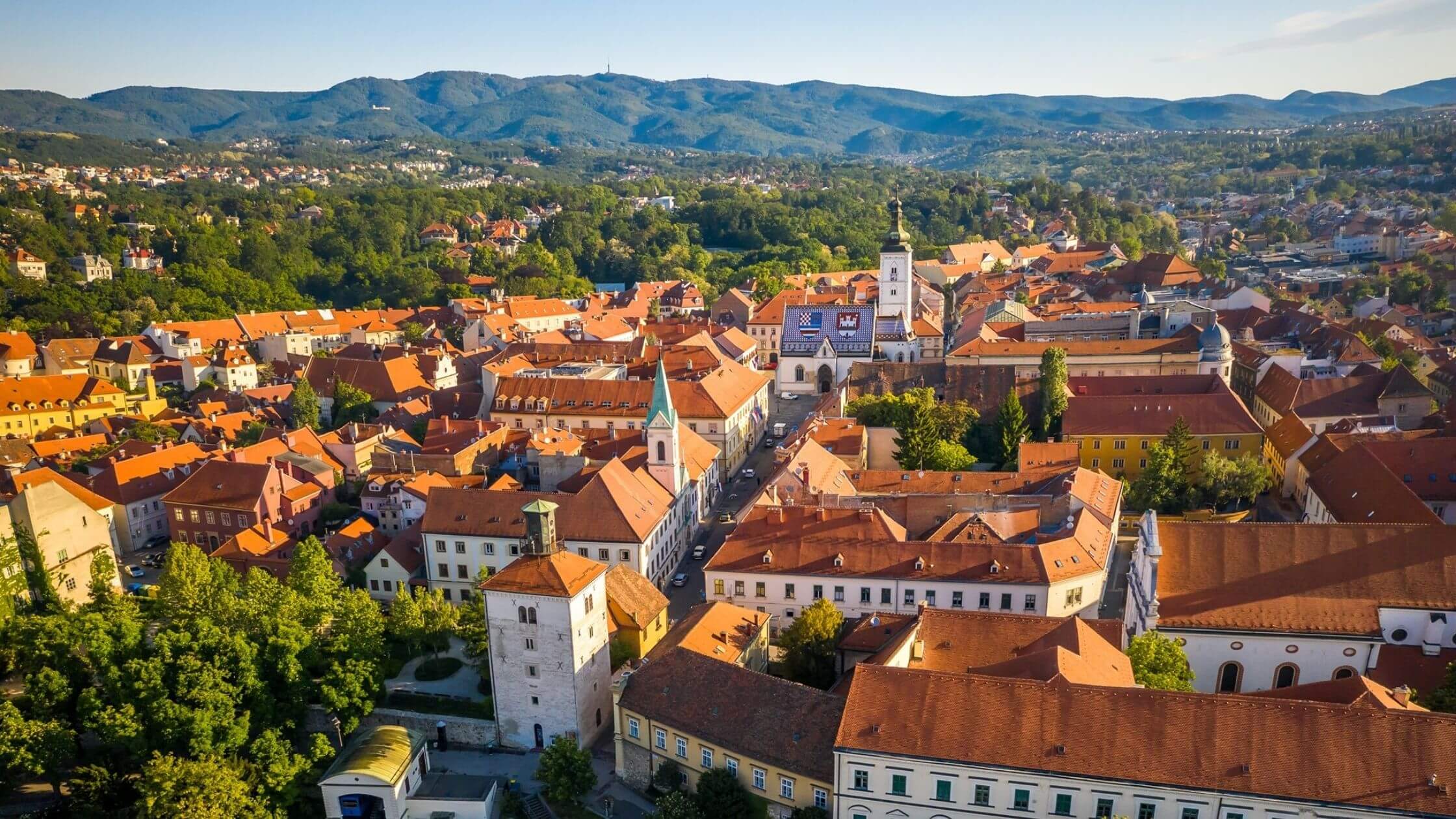
The gorgeous buildings of Upper Town in Zagreb. Visit Zagreb/Facebook.
Cultural landmarks of the city include Ban Jelačić Square which has existed since the 17th century, the Zagreb Cathedral, or the magnificent Croatian National Theater whose unveiling ceremony was attended by Austro-Hungarian Emperor Franz Joseph I. So, make sure you squeeze in some time for a walking tour to absorb the sights of Zagreb’s Old Town.
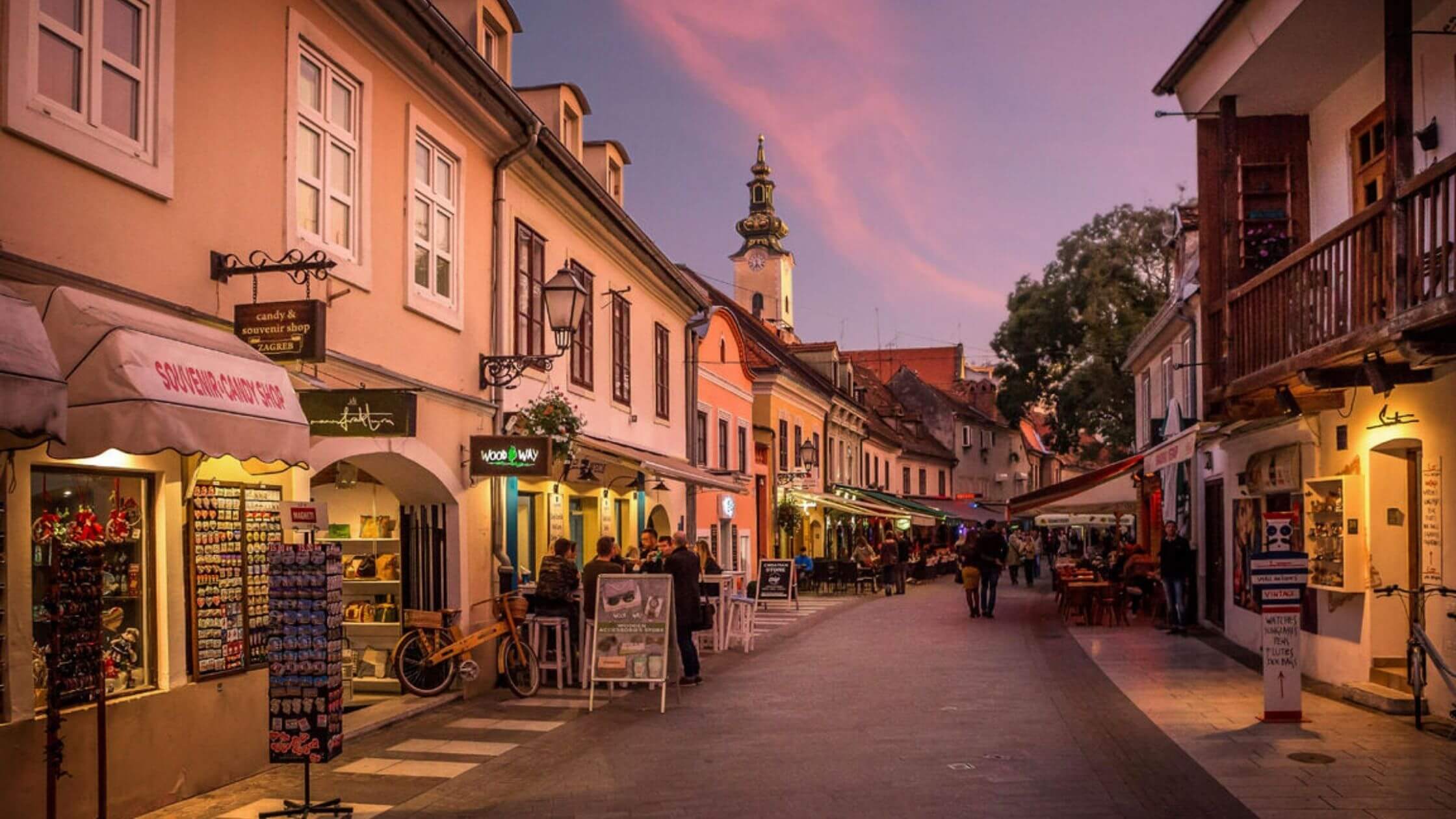
Evenings on Tkalčićeva Street, Zagreb. Visit Zagreb/Facebook.
Hungry? Head to Dolac market, Zagreb's main open-air farmers market to pick up some fresh, seasonal produce and souvenirs. You can also choose to end your day with a tasty meal and local wine from any of the excellent restaurants, bars, and cafes along Tkalčićeva Street.
Day 2: Rovinj
After a bustling day in Zagreb, the enchanting city of Rovinj is a splendid change of pace. Perfectly situated on the Istrian peninsula, the city boasts a rich heritage, from being settled by Venetian tribes, to becoming part of the Byzantine and Frankish Empires, all reflected in the diversity of the city’s architecture, art, and culture.

This stunning setting has been a popular film setting for movies such as "The Hitman's Wife's Bodyguard". Rovinj Tourist Board/Facebook.
Stroll along the beautiful cobbled streets and narrow alleys of Rovinj Old Town and make your way towards St. Euphemia Cathedral. Along the way, you should pass by Grisia Street, lined with souvenir stalls and galleries with the most unique pieces to add to your collection.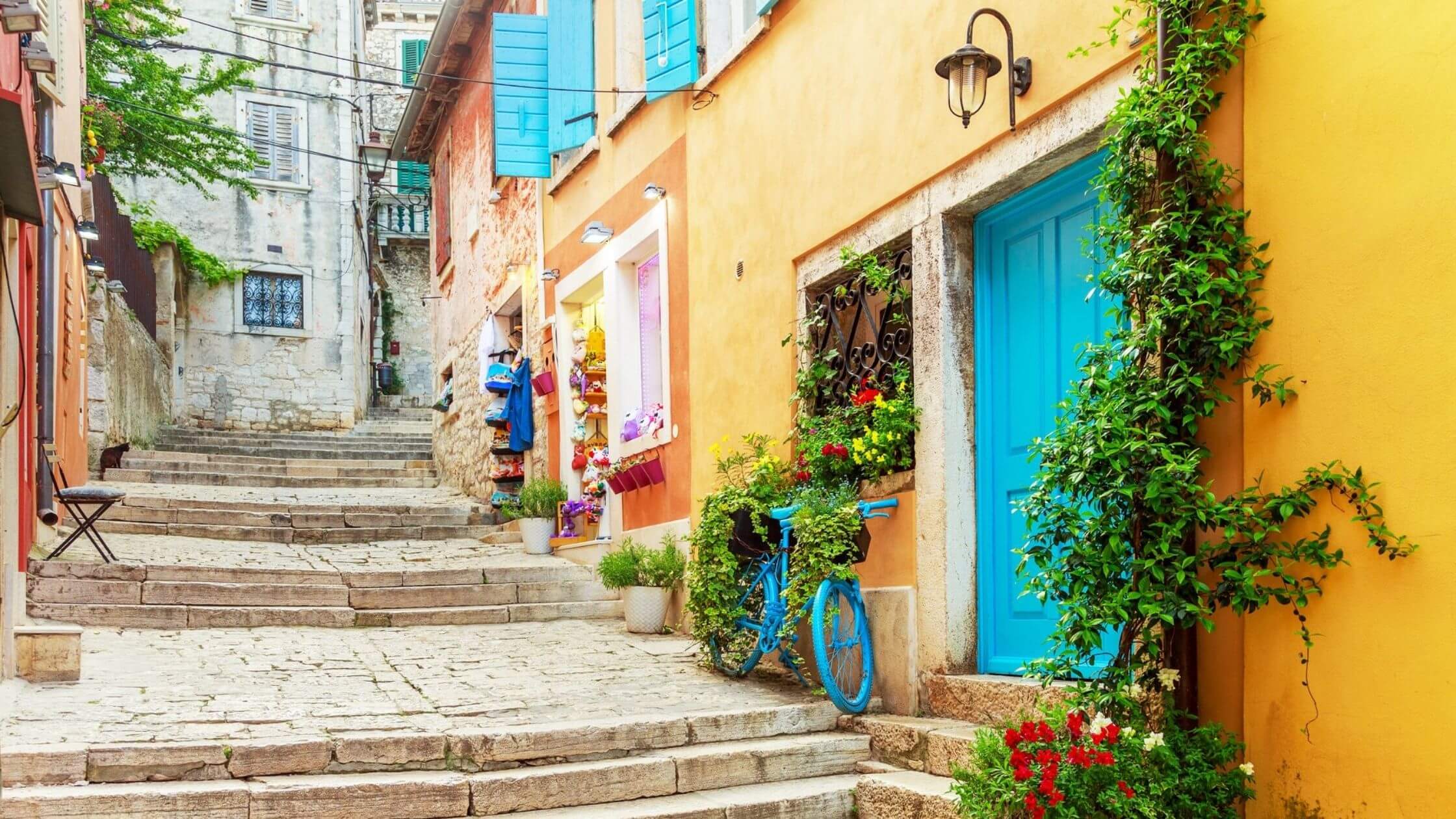
The charming, picturesque streets of Rovinj's Old Town. Rovinj Tourist Board/Facebook.
If you have time to spare, take a day trip to Sveta Katarina, a small picturesque island that’s a mere 10-minute water taxi ride from the pier. Spend the afternoon taking a dip in the aquamarine waters of the bay, or hike on one of the numerous trails dotted around the island, or both!
Alternatively, sit back and relax on some of the most beautiful beaches in Istria such as Amarin, Borik, or Valdaliso Beach.
Day 3: Pula
Before leaving the Istrian Coast, make Pula the next stop on your road trip. Serving as the capital of Istria, Pula was the main military port for the Austro-Hungarian Monarchy at the height of its military glory. Today, remnants of these times are reflected in the city’s breathtaking landscape.
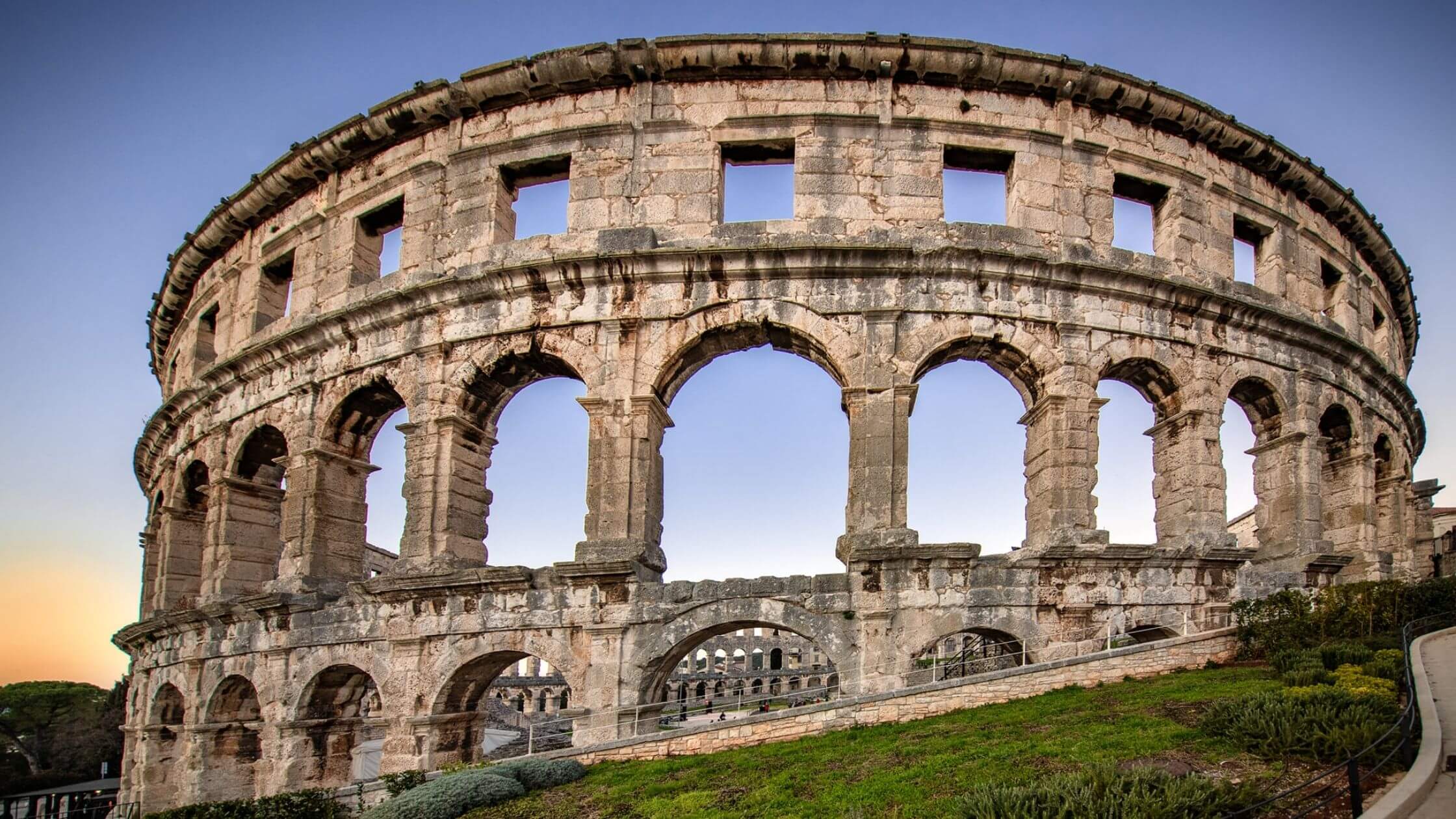
The Pula Arena frequently hosts concerts and festivals throughout the year. Pula Plus/Facebook.
The famous Pula Arena, one of the most well preserved Roman amphitheaters in the world, is a must-see! Another not to be missed landmark is the Temple of Augustus, a monument dedicated to the first Roman emperor in honor of his rule.
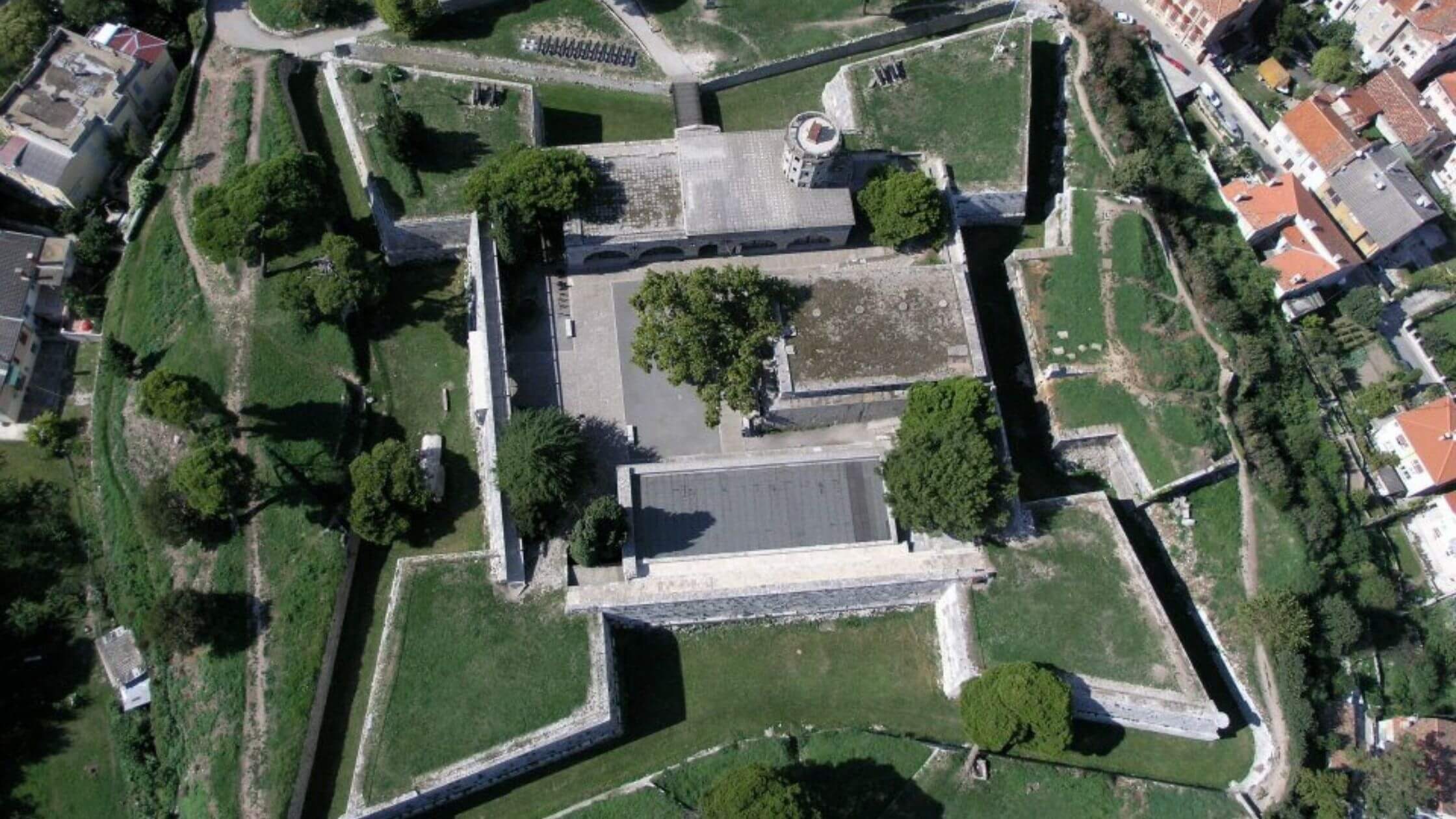
The unique shape of Fort Puna Christo. Pula Plus/Facebook.
Also check out the impressive Fort Punta Christo, which includes an underground section to explore and a well-stocked rooftop bar for refreshments after. You can also enjoy magnificent 360-degree views of Pula from the Venetian Fortress (Kaštel) which also houses the Historical and Maritime Museum of Istria.
Day 4: Plitvice National Park
Although Croatia boasts some of the best coastlines in the world, Plitvice Lakes National Park consistently appears in the top must-see places to visit in Croatia, and for good reason! This UNESCO World Heritage Site holds the title as the oldest and largest national park in Croatia, famous for its gorgeous turquoise lakes. Well worth the detour inland.
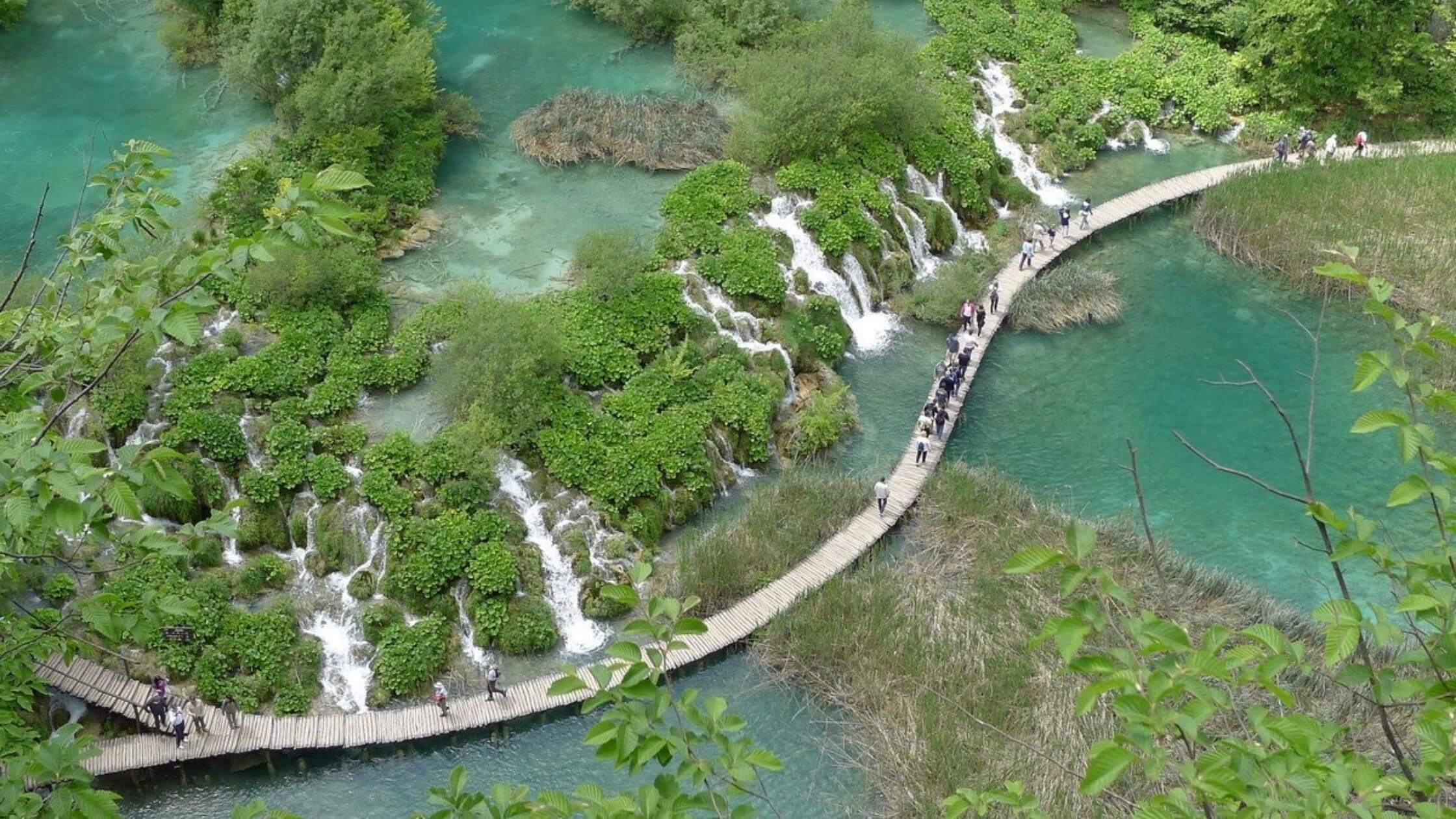 The main walkway of Plitvice Lakes National Park. Plitvice Lakes National Park/Facebook.
The main walkway of Plitvice Lakes National Park. Plitvice Lakes National Park/Facebook.
Be aware that the park can get very crowded during the season! To avoid this, just be prepared to visit early (7-8am), or better still, stop by during off-peak seasons where the park transforms into the perfect winter wonderland.
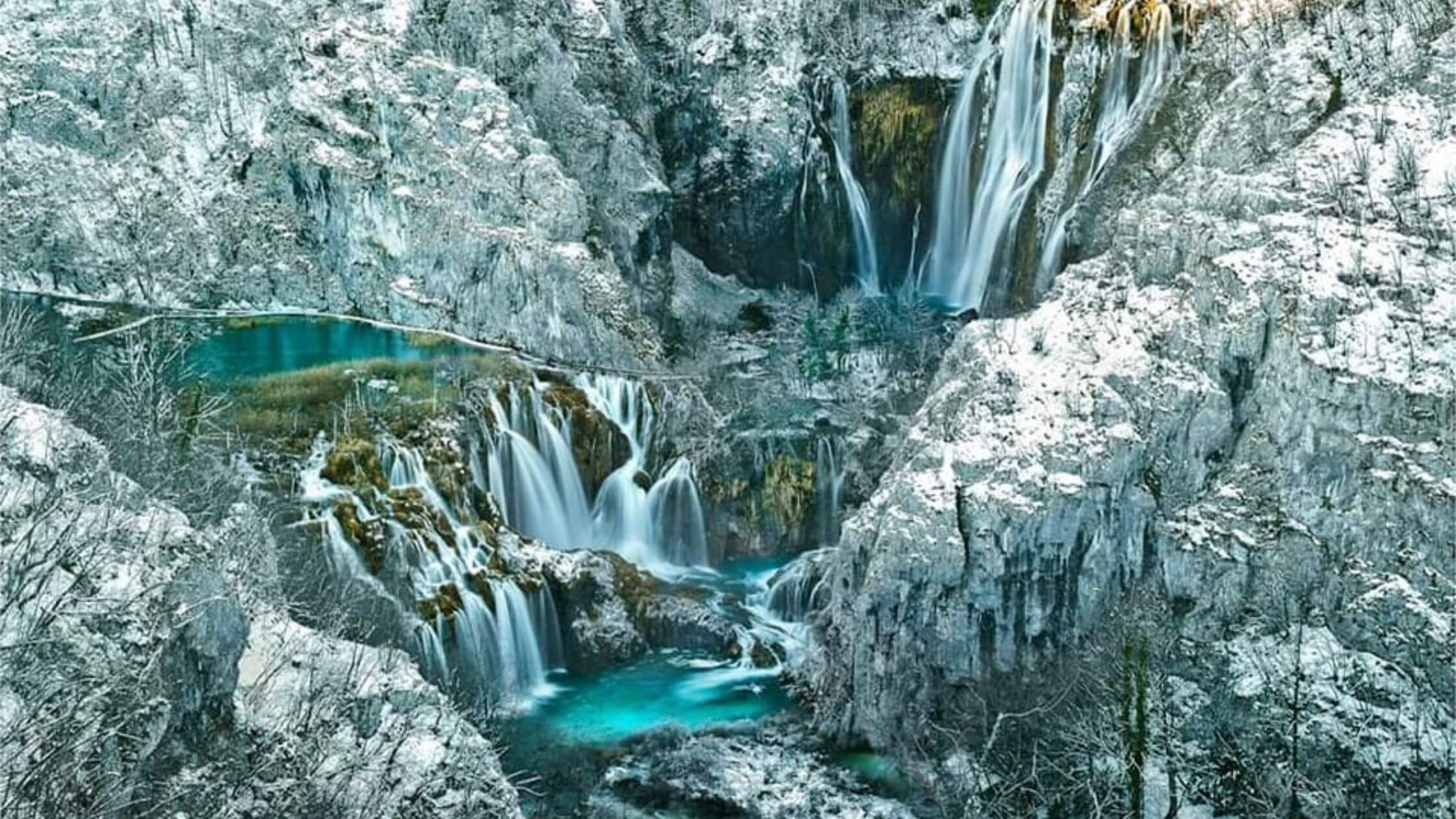
Plitvice Lakes National Park/Facebook.
Day 5: Zadar
After a day in the lush forests, take a scenic drive back to the Dalmatian coast and spend a day in the charming city of Zadar, the oldest continuously inhabited Croatian city. Today, cozy cafes and art galleries are seamlessly woven into remains from the times of Julius Caesar and Emperor Augustus.
Enjoy a relaxing stroll through Old Town and admire the historical architecture including the Church of St. Donatus, the Landward Gate, the Cathedral of St. Anastasia, and the Roman Forum.
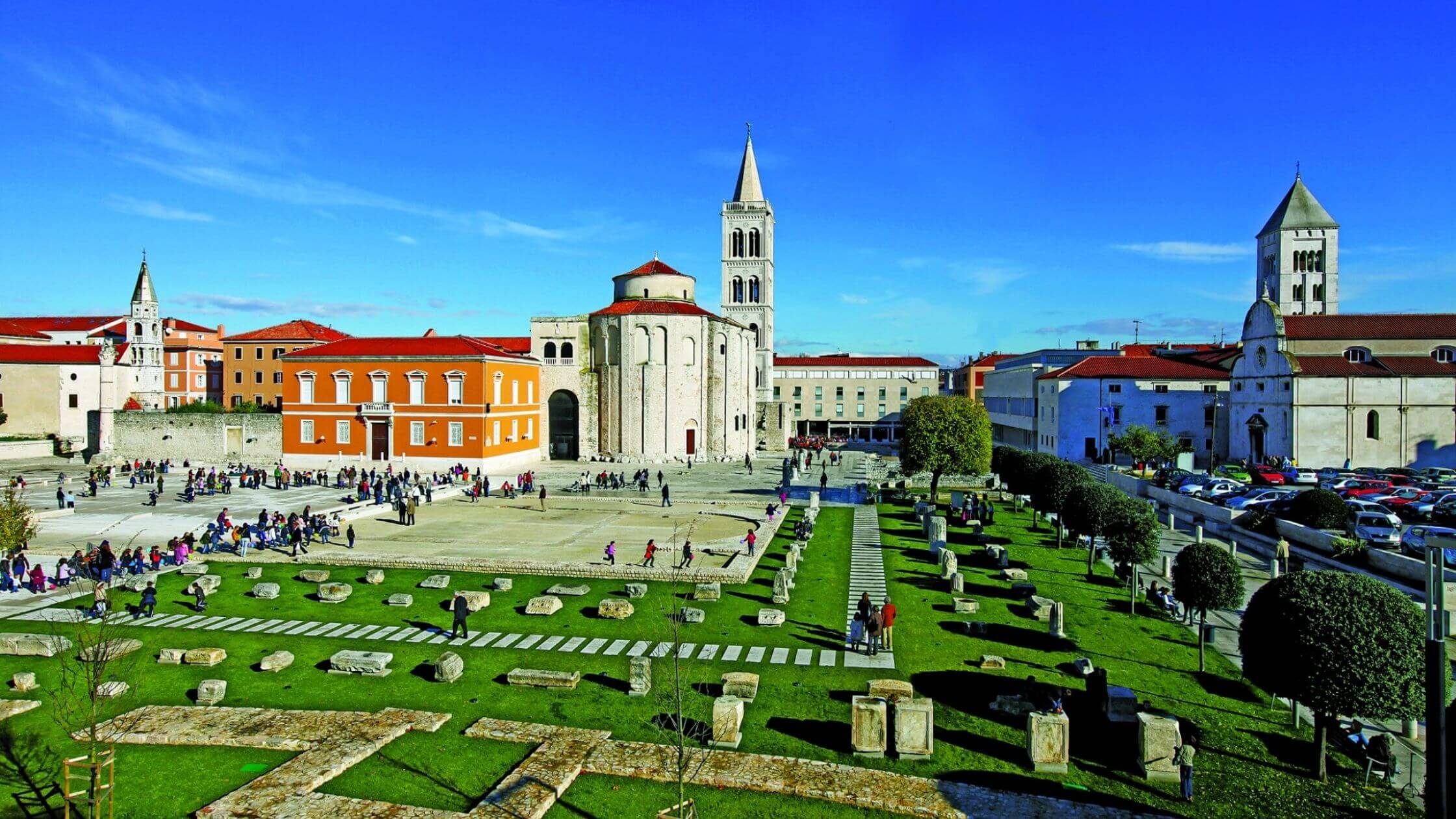
Ruins in the Old Town of Zadar. Zadar Region/Facebook
Along the way, catch the famous Sea Organ, and a sunset so beautiful, it even captivated Alfred Hitchcock! Just after sunset, take in the light show at the Sun Salutation, an installation created by Nikola Bašić, the same artist who designed the sea organ.

The Landward Gate, Zadar. Zadar Region/Facebook
If you have some time in between, head to Pag Island to try some of the famous Paski Cheese or to Nin, home to Queen’s Beach, the longest sandy beach in Croatia. Other gorgeous beaches along the coast of Zadar include Kolovare and Borik.

Award-winning sheep's cheese from Pag Island. Pag Tourist Board/Facebook.
Day 6: Split
Welcome to Split, the largest city in Dalmatia, and second-largest in all of Croatia. The city was founded as the Greek colony of Aspálathos between the 3rd and 2nd century BC.
It was later where Diocletian's Palace was built for the Roman emperor in AD 305. The palace also houses the Peristil, or the main square, another great place to enjoy some coffee and people-watch in addition to the Riva promenade.
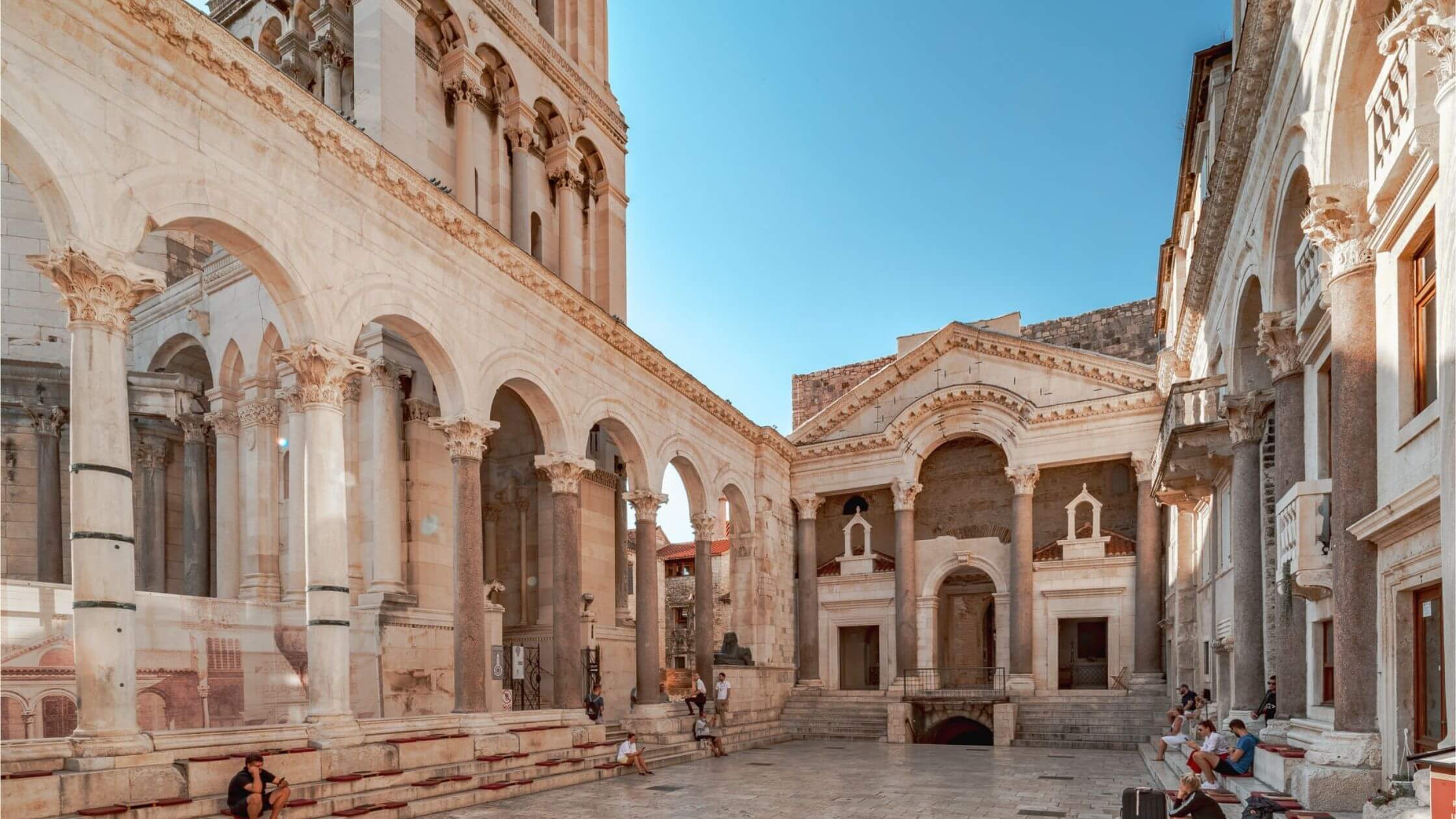
Enjoy a drink inside the walls of the Diocletian's Palace, Split. Visit Split/Facebook
While exploring the Old Town, stop by the Green Market, the largest farmer’s market in Split, to pick up some fresh, organic produce. Turn the corner and it is difficult to miss the 8.5-meter statue of Gregory of Nin, sculpted by world-renowned artist Ivan Meštrović. Rubbing the statue’s toe is said to bring good luck, so much so that it has been worn smooth by visitors over the years.
You can also squeeze in a light hike up Marjan Hill, also known as the “lungs of Split”. Its summit is an ideal place for a picnic, offering marvelous views of the harbor and neighboring islands.
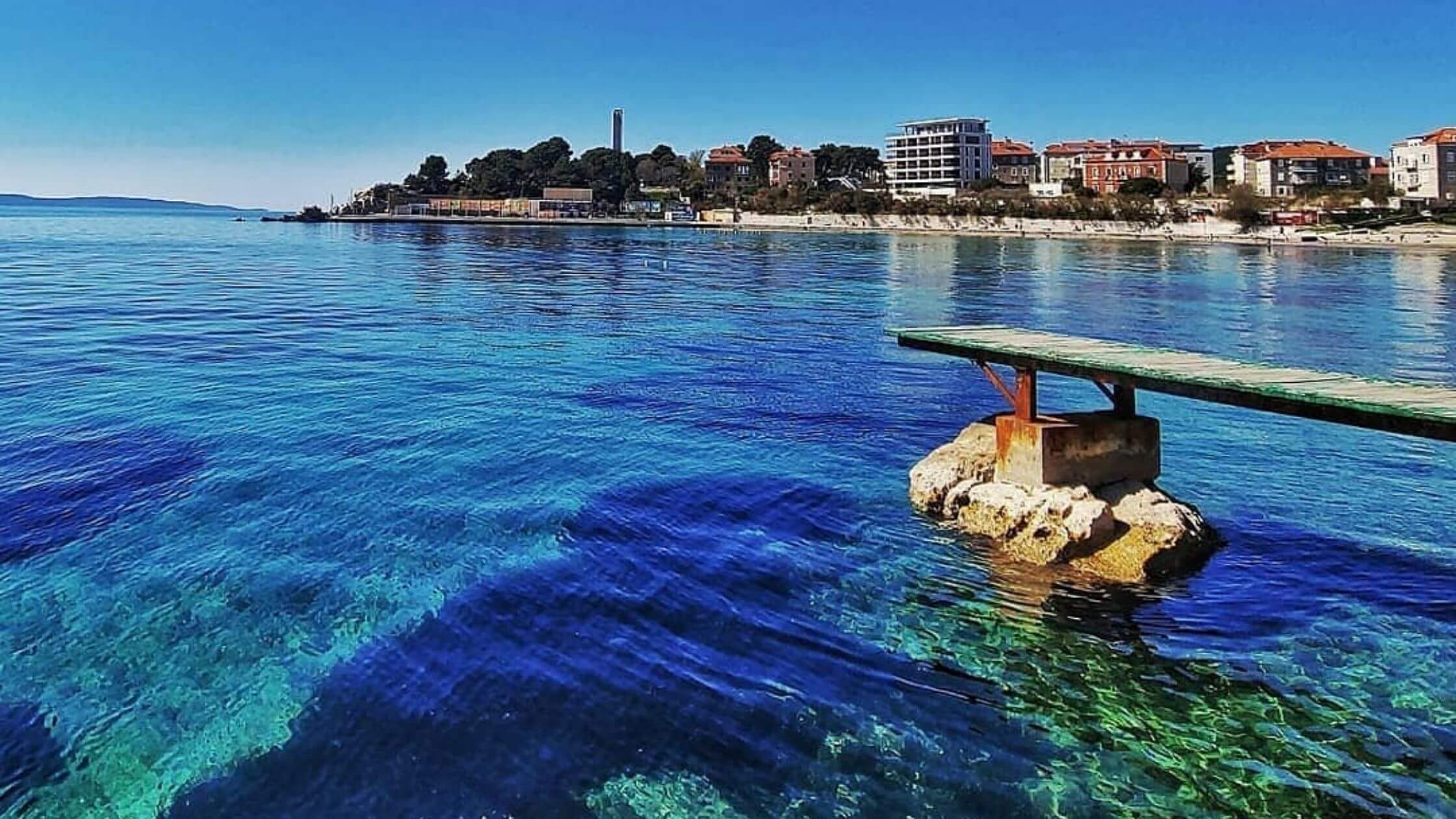
The crystal clear waters of Bačvice beach. Visit Split/Facebook
Fancy another beach day? Bačvice beach is a popular hangout spot in the center of Split. Relax at one of the many cafe bars and watch the locals play picigin, a traditional ball game. Rumor has it this beach is also where the sport originates from.
Day 7: Krka/Omiš/Trogir
Don't be too quick to leave Split. From here, there are several options for day tours to surrounding attractions.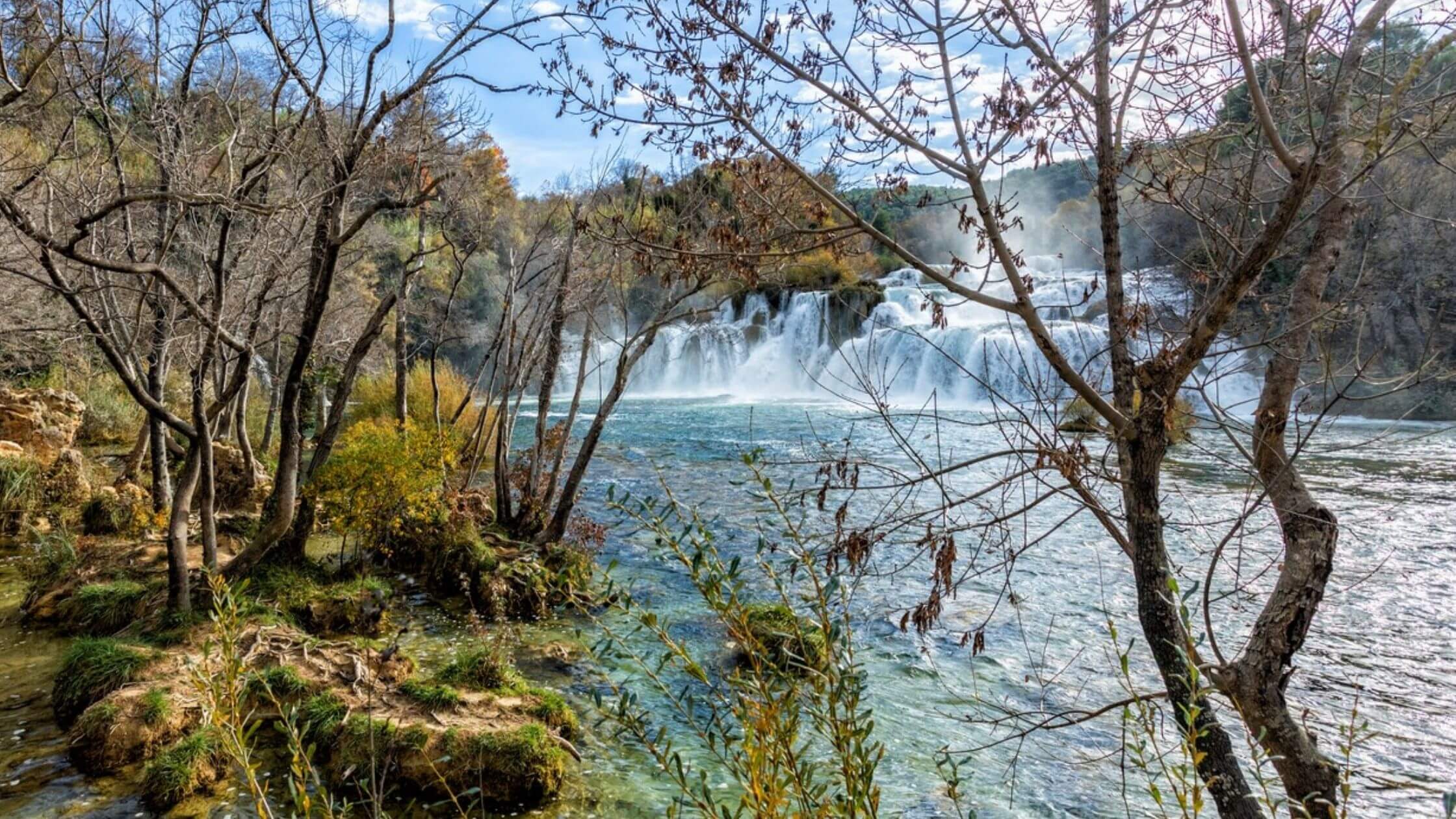
Some of the most stunning waterfalls in Croatia can be found at Krka National Park. Krka Nationa Park/Facebook
For nature lovers, Krka National Park is another national park about an hour’s drive from Split. Spend a day walking along well-maintained trails that wind along some of the most stunning waterfalls in the country. Again, make sure you get there early to avoid the crowds!

Try white water rafting in Omiš. Tourist Board Omiš/Facebook
For those craving more action, head to the picturesque town of Omiš which offers one of the most dramatic scenes on the coast. The city is nestled in a canyon surrounded by gray, craggy mountains, contrasting the peacock blue waters where the Cetina River meets the Adriatic Sea. Omiš offers white water rafting, free climbing, ziplining, abseiling, and canyoning, amongst other activities for visitors seeking a bit of a thrill on their vacation.
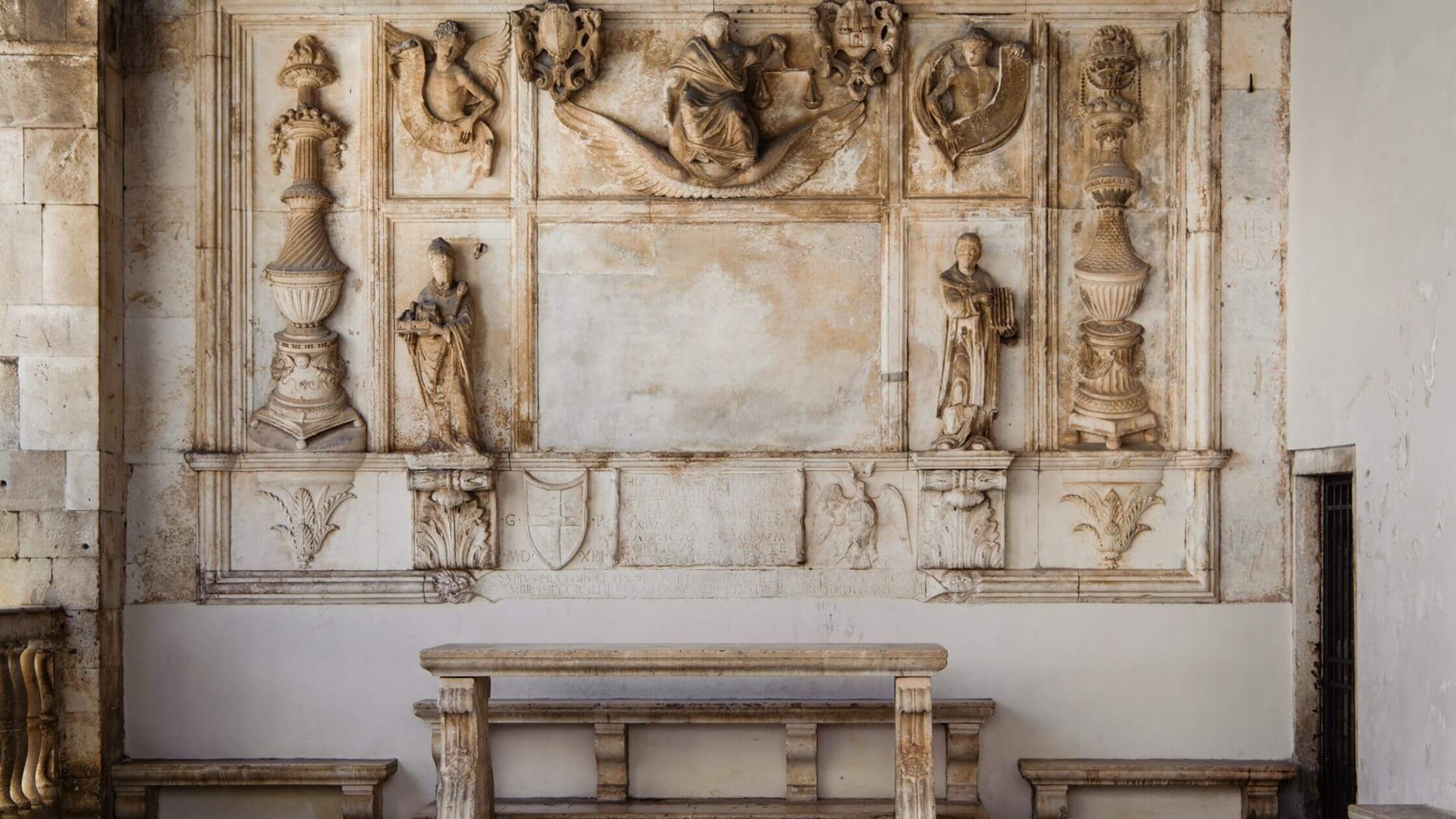
Just one of the many well-preserved remains scattered around Trogir's Old Town. Visit Trogir/Facebook
For the history buff, head to Trogir which has the best-preserved Romanesque-Gothic complex in all of Central Europe. Take a walk around the Old Town, surrounded by walls comprising a series of dwellings and palaces from the Romanesque, Gothic, Renaissance, and Baroque periods.
Day 8: Hvar
With over 1,000 islands, it wouldn’t be a complete trip to Croatia without doing some island hopping. From Split, take the 1-hour ferry ride over to Hvar. Its beauty and vibrant nightlife have made it a regular vacation spot for the likes of celebrities such as George Clooney and Beyonce.
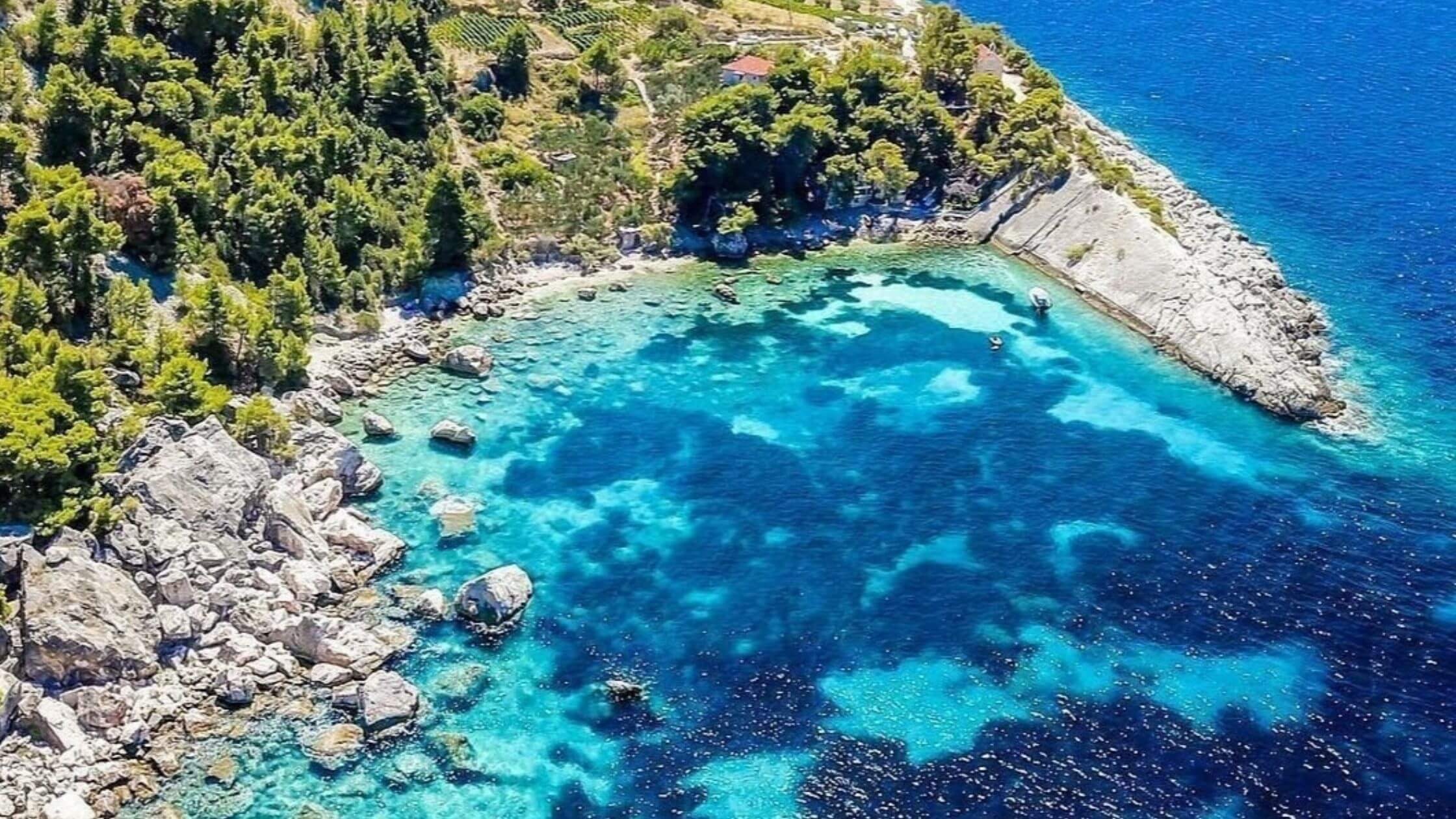
Hvar is one of the longest and sunniest islands in Croatia. Hvar Tourist Board/Facebook
Start by wandering around St. Stephen’s Square, the largest square in Croatia and don’t miss the Cathedral of St. Stephen and the Hvar public theater. For the best view, climb to the top of the Španjola Fortress to get an unobstructed view overlooking Hvar Town and nearby Pakleni Islands. You can even rent a small boat (no license required) to explore these islands on your own!
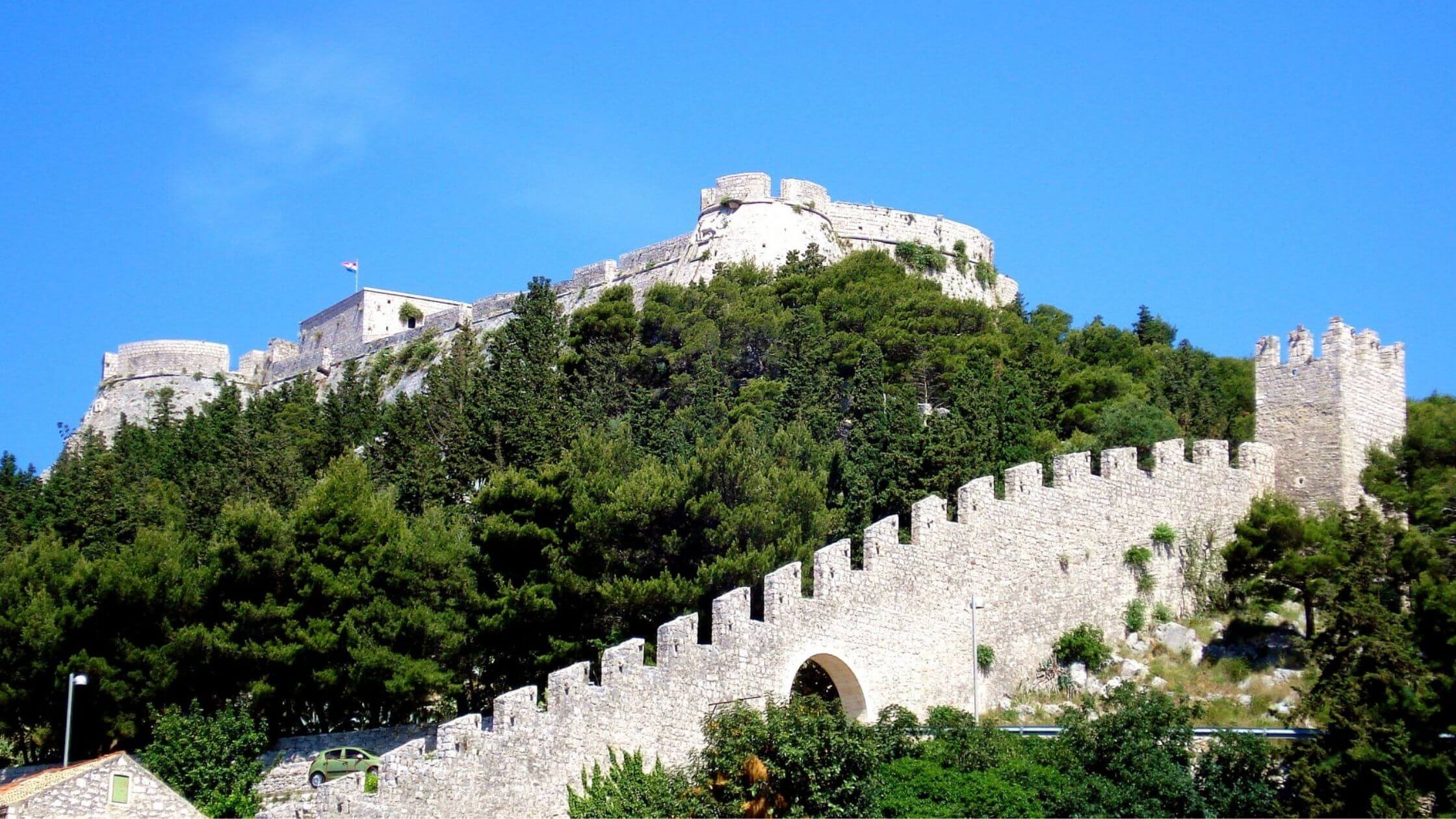
The view from the top of the Španjola Fortress is unparalleled on the island. Hvar Tourist Board/Facebook
Once you’ve taken in all these sights, enjoy another relaxing beach day at one of the many pristine beaches such as Malo Zaraće, Dubovica, or Pokonji Dol.
Alternatively, if you’re looking for another day trip, book a tour with one of the local travel agencies to the Blue Caves on Biševo and marvel at its clear, iridescent blue waters.
Day 9: Korčula
After the buzz of Hvar, take the ferry to the tranquil town of Vela Luka on the island of Korčula, the birthplace of famed explorer Marco Polo and home to some of the best Croatian wines.
From Vela Luka, take a scenic drive towards the town of Korčula, also known as “little Dubrovnik”. Along the way, stop by the numerous family-run vineyards that welcome visitors for wine and cheese tastings.
Grk is a white wine variety grown almost exclusively on Korčula, other white wines such as Pošip and Rukatac are also premier Croatian wines, often served on celebratory occasions. For fans of red wine, do grab a bottle or 2 of Plavac Mali.

Vineyards of Korčula island. Visit Korčula/Facebook
In Korčula, walk off the afternoon’s indulgences exploring the streets of the Old Town with its architectural influences by the Venetian Renaissance, before capping off the night with a meal and more wine at any of its superb restaurants.

Korčula town. Visit Korčula/Facebook
Day 10: Dubrovnik
There’s no better way to end the trip than with Dubrovnik. And yes, there is no shortage of Game of Thrones tours to indulge your senses, but there is so much more to this medieval city than where Cersei Lannister did her walk of shame.
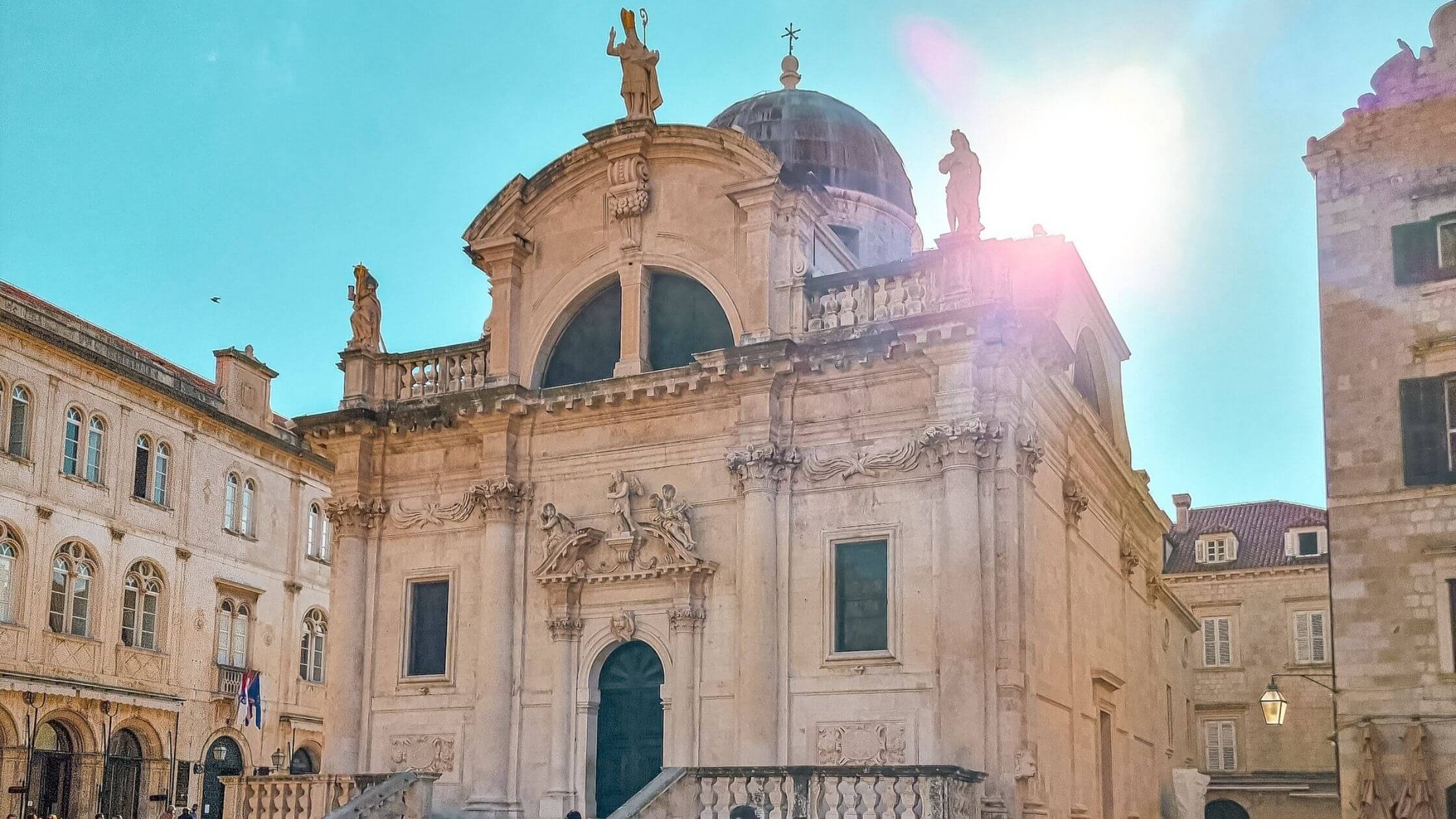
The beautiful Saint Blaise's Church in Dubrovnik was built during the 10th century. Dubrovnik Tourist Board/Facebook
Talk a walk along the city walls and through Stradun, Dubrovnik’s main street. From here, you can also catch Onofrio’s Large Fountain that used to supply Dubrovnik with fresh water during the Middle Ages and other impressive structures including the Clock Tower, Saint Blaise's Church, Saint Ignatius Church, Cathedral of the Assumption, and the Franciscan Monastery.
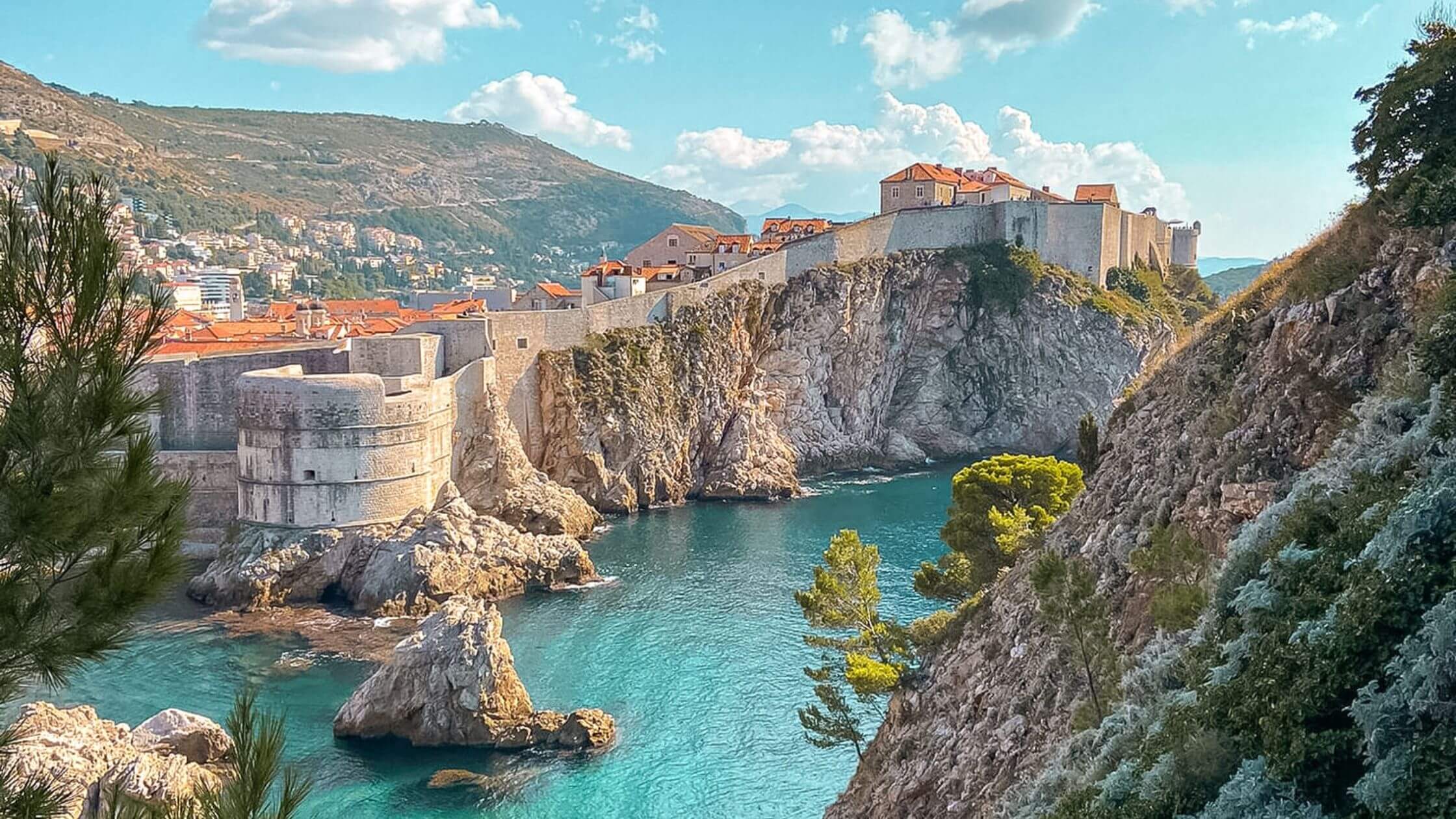
The view from beyond the walls of Dubrovnik looking upon Fort Lovrijenac. Dubrovnik Tourist Board/Facebook
Watch the sunsets and reminisce on your amazing road trip through the country at one of the cliff bars along the city walls, before capping it all off with an exquisite meal at one of the many Michelin-starred or recommended restaurants Dubrovnik has to offer.

Nothing like a luscious meal to top off a fantastic experience road-tripping in Croatia. Dubrovnik Tourist Board/Facebook
And that’s all folks, you’ve done it! Croatia in 10 days! Bear in mind, this is merely the appetizer of what Croatia has to offer. Customize this guide to better suit your tastes and pace and remember, don’t hesitate to ask the locals in order to unlock the best secrets each location has to offer.
For more on travel in Croatia, follow TCN's dedicated page.
‘Besides, the Food Is Very Good’: Impressions of Croatia in Travel Journals of Yore (II)
February 5, 2022 - In the second part of the feature exploring impressions of Croatia found in old travel journals, we're retracing the steps of several foreign visitors in Dalmatia.
If you haven't read the first part, please head here to meet our protagonists, fearless adventurers and diligent reviewers, and see what they thought of Istria. We’re picking up where we left off, with all of our esteemed travellers heading further south.
First up, Zadar, the main Venetian base on the Croatian coast back in the day and thus an obligatory stop on every tour of the Adriatic. Very well defined in this succinct statement by archaeologist Jacob Spon who travelled in Dalmatia in 1675:
It’s the capital and one of the best places that the Republic owns in Dalmatia.
He also liked the cathedral and excellent paintings of Titian and Palma displayed in the churches of Zadar, but I’ll spare you the rest of the paragraph as it’s not more than a list of artworks.
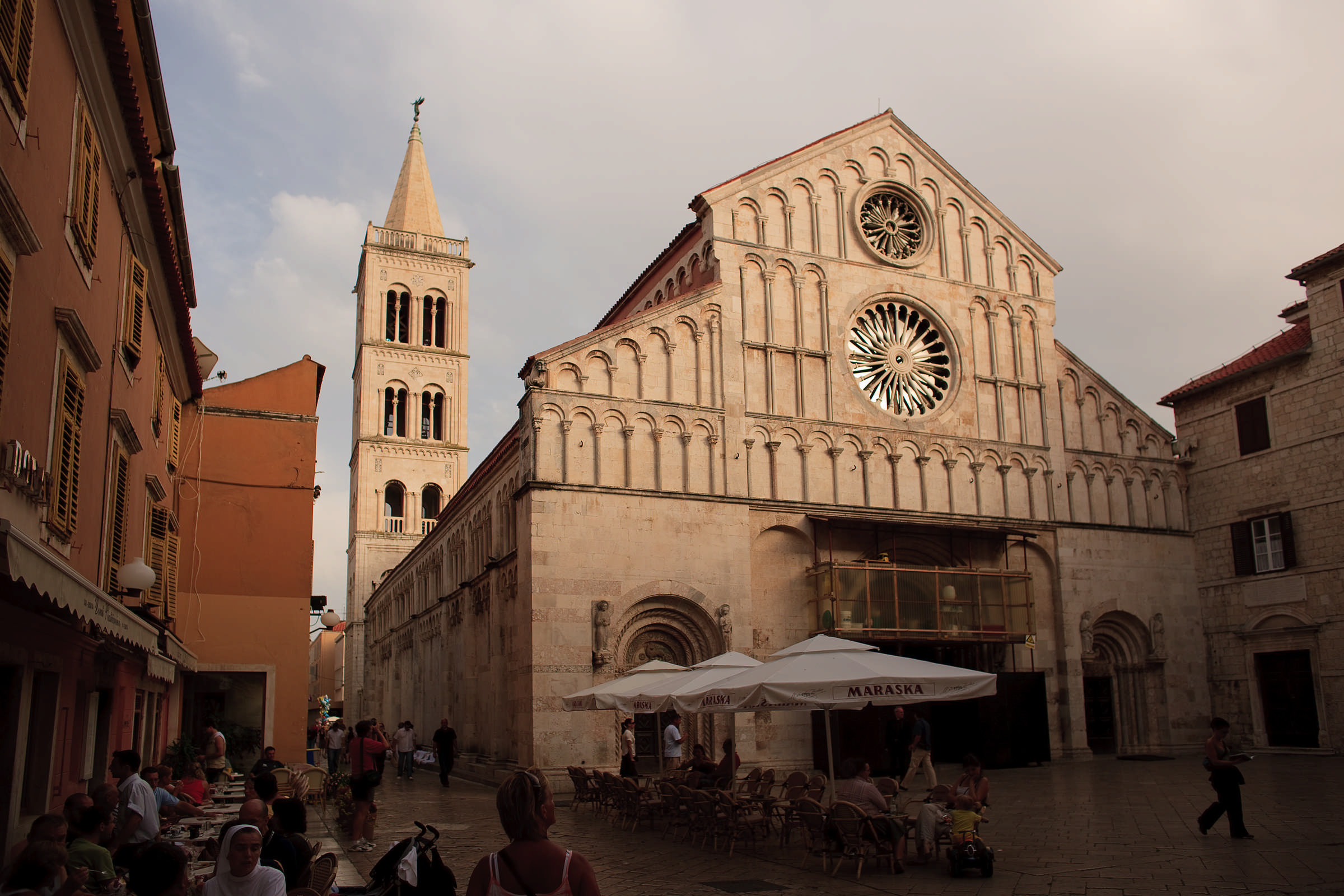 Zadar cathedral by Romulic
Zadar cathedral by Romulic
A few thoughts on Zadar by Noé Bianchi who visited in the 1770s, in his trademark enumeration style:
The city has six gates, a great Arsenal, and many ships and boats. It is a beautiful port, and a place to live in abundance; its territory spans over thirty miles on the mainland, with many castles, islands, and more than four hundred reefs. There are large pastures with plenty of livestock, and an abundance of all sorts of fish; they dress pompously, are very devoted to arms, but above all to humanist studies; they have many schoolmasters, and a lot of merchants.
Let’s hope it was the people of Zadar who dressed pompously and not the fish. Thankfully, we have a new character in our story: countess de La Morinière de La Rochecantin who offers her view of the locals, having visited Zadar in 1907:
The men are not handsome at all; their eyes are hard, their facial features sharp. The women, on the other hand, have a beautiful smile and something seductive under those colourful scarves with which they cover their heads.
Sorry, men of Zadar.
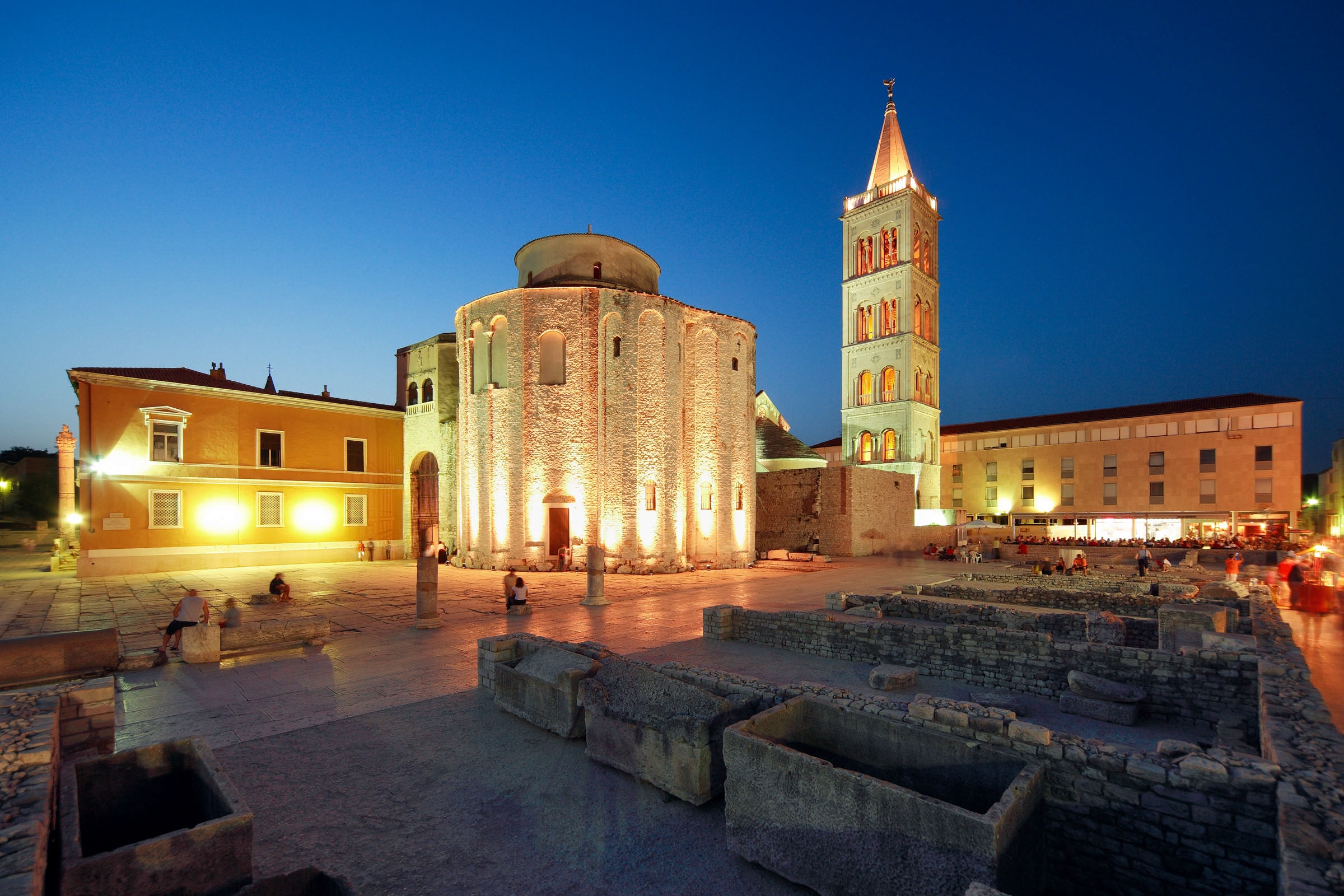 Zadar by Romulic
Zadar by Romulic
***
On we go to Trogir, where the countess notes the following:
The inhabitants are largely similar to those of the Illyrian islands, but this lot is more gentle. They live here in a small Provence. Tamarisk trees and pines, through which a soft wind whistles as if in song, line the narrow paths that run along the shore.
This morning, the water glistens with opal reflections, the air is gentle and warm, but it’s enough for the sky to get veiled in clouds for a feeling of melancholy to take hold of us. In these countries where the sun is king, it alone gives life to beings and things: aromatic plants, trees with pale foliage; the flora of such ardent regions only comes alive and reveals all its splendour and perfumes in the light and under the scorch of the sparkling star.
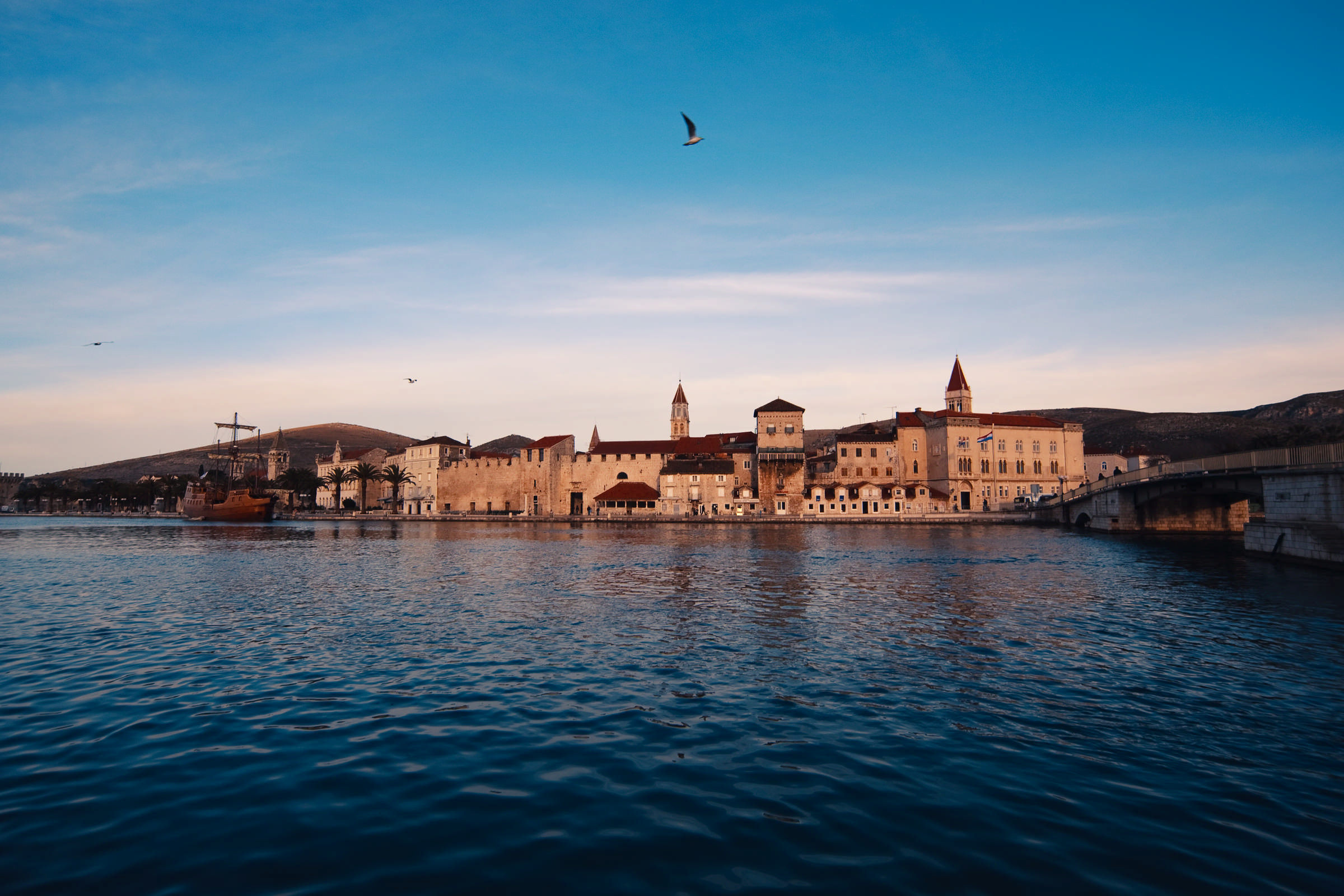 Trogir by Mario Romulic
Trogir by Mario Romulic
Spon on the other hand has a less poetic approach and seems to be excited about Trogir mostly due to it being the birthplace of Ivan Lučić Lucius, a Croatian historian of international renown.
Lucius is known as the father of Croatian historiography owing to his work 'On the Kingdom of Dalmatia and Croatia', in which he gives a comprehensive account of Dalmatia’s history from the Roman times to the end of the 15th century. Seemingly enough to merit admiration from monsieur Spon who, as we’ve learned, wasn’t easily impressed:
This monsieur Lucius is a nobleman from this country whom I had the honour to meet in Rome, where he is now residing. His homeland is indebted to him for having pulled it from the shadows of antiquity with the historic account he made.
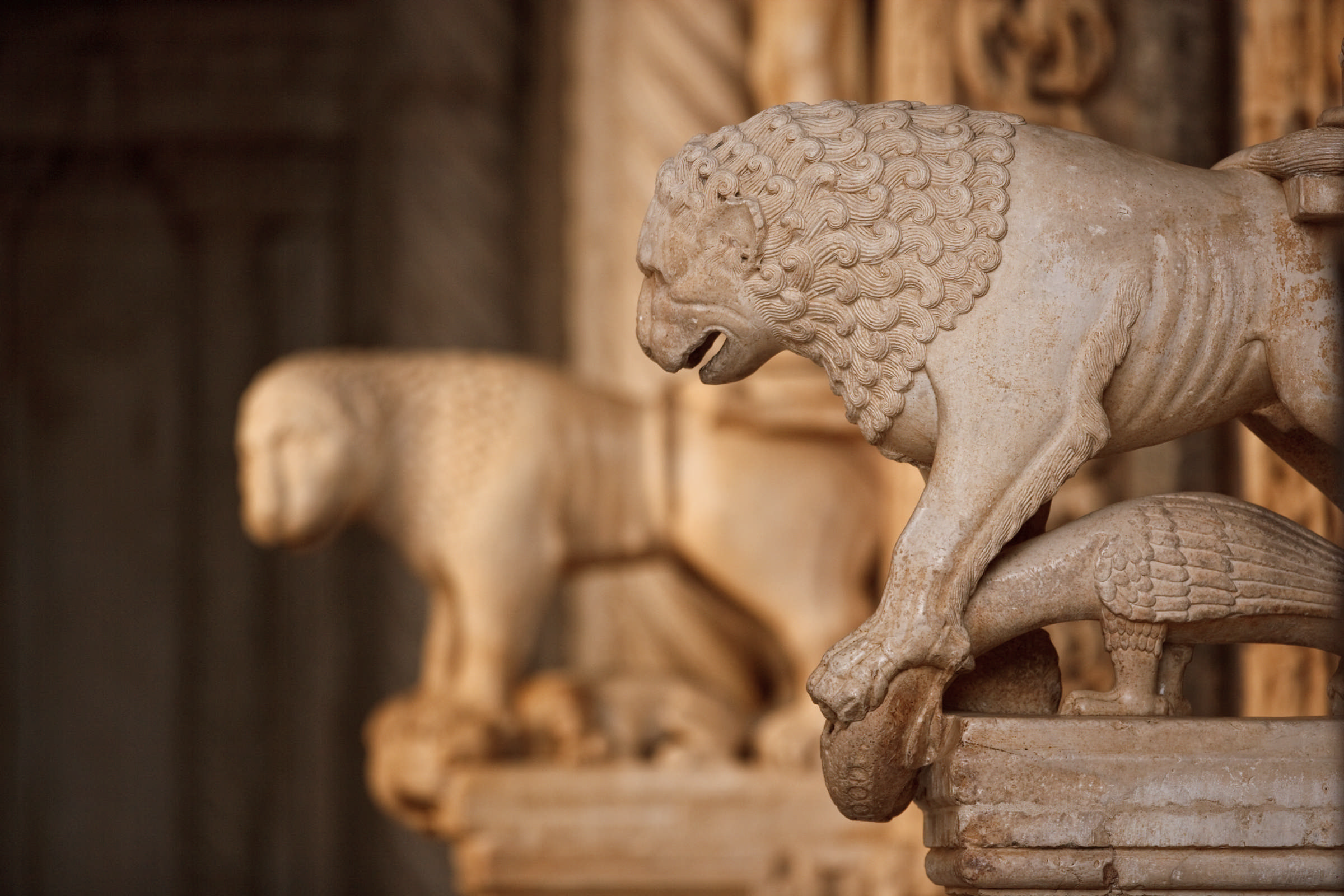 Trogir by Mario Romulic
Trogir by Mario Romulic
Immediately upon arrival, Spon and his party are struck by one of the worst troubles that can happen on a trip: no place to stay!
We had arrived in Trogir at dinner time and were looking for lodging, when we were told that we had to make our own arrangements for dinner, and that it wasn’t customary in that land to deal in hospitality [accommodation].
Naturally, as they were starving at that point, they weren’t exactly happy to hear this, but they got lucky shortly thereafter and found a place in town that sold wine. They were soon ushered into a nearby building that turned out to be none other than Lucius’s palace. This one:
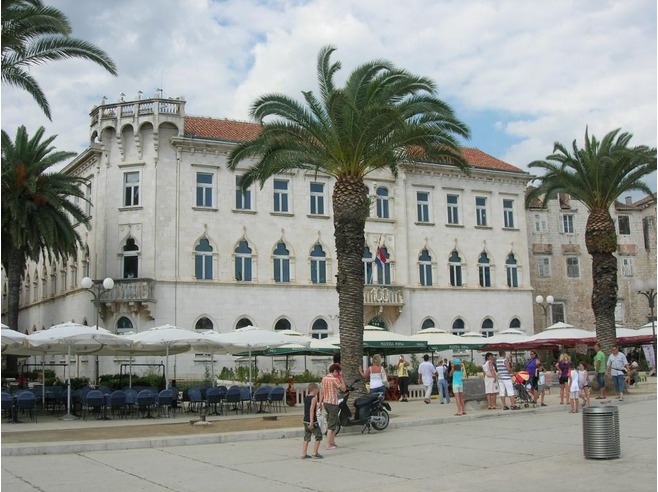
We were surprised to see this house, which is quite beautiful and has a view of the sea, empty and as if deserted, and we were even more surprised when we were told it was the house of this monsieur Lucius whom I just talked about. It has been more than twenty five years since he left it, all because of the incivility of a General of Dalmatia who, having arrived in Trogir, let [Lucius] know he wanted to lodge in his house. The nobleman was getting ready to receive him, and left for himself only a mediocre apartment. But the general immediately sent his people to take all the furniture outside. This impudence annoyed [Lucius] so much, he left the country immediately and never wanted to return.
Loving the gossip. Any thoughts on the sights, though?
The cathedral isn’t ugly. There are some statues in the church, made by a fairly good hand.
Today, the historic centre of Trogir, including the cathedral of St Lawrence, is a UNESCO World Heritage Site.
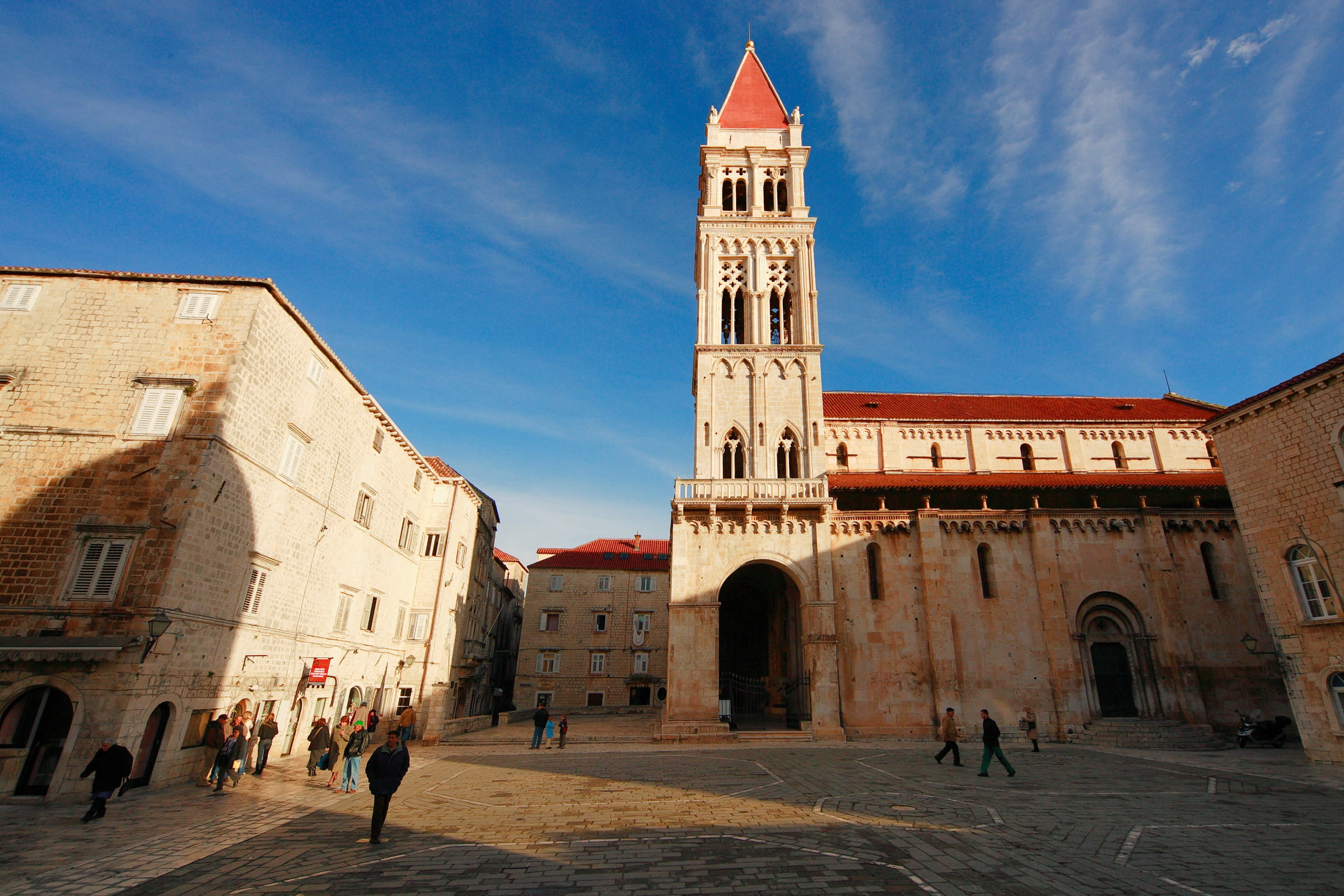 Trogir by Mario Romulic
Trogir by Mario Romulic
We have another appearance by Alberto Fortis who shares a warning: don’t get scammed on your travels! After two pages of musings on marble and its various properties, he says:
As I searched in vain around Trogir to find the famed marble, someone showed up who wanted to abuse my lack of guile by presenting me with a piece of Carrara marble as if it were taken from the nearby hill of St Elijah, where you can find old quarries whose marble isn’t rough at all, but is still far from the refined marble of Carrara.
No one's taking Fortis for a fool!
A traveller must always keep their guard up, as I have, before they draw conclusions based on other people’s claims. I.e., they should go directly to the site in question or at least threaten to do so in spite of all difficulties; that is how you uncover lies.
A marble-related crisis isn’t a situation a lot of us are likely to find ourselves in these days, but fine advice nonetheless.
 The portal of Trogir cathedral by Mario Romulic
The portal of Trogir cathedral by Mario Romulic
He adds a few favourable impressions of Čiovo island:
The island’s climate is truly very pleasant, the air perfect, oil, grapes and fruit excellent, the sea rich in fish, the port spacious and shielded. And its surface isn’t so small that a nobleman couldn’t comfortably walk or ride around it.
Good to know.
***
Before we go on to Split, a note on the hinterland by Marcotti, an Italian writer visiting in the late 1890s:
Those who want to be more in control of their time while travelling in the Dalmatian hinterland will prefer to travel by horse, but will have to get accustomed to a common lack of comfort in regards to accommodation and food: pecorino cheese, stale bread; plum brandy to drink. Corn polenta, ham, roasted lamb, smoked mutton and wine are items of luxury.
***
I believe we’re all familiar enough with the splendour of the Diocletian’s palace in Split to skip the lengthy elegies about its magnificence. Instead, let’s see a few impressions of the town in general, starting with Marcotti:
The market is especially crowded on Monday and Thursday mornings. It is interesting to see how peasants and people from the outskirts of town are dressed: bright colours (blue, red and black), large pieces of jewellery, filigree, gold and silver buttons, chains, medals. Compared with the Morlach women, the women of Kaštela stand out with their elegance.
The countess gets philosophical:
A rosy and curly child, with a serious expression of a grown man, leads us through narrow streets in the ruins of the palace. There is something moving about this loyalty that leads men to live where their ancestors lived, be it within the crumbling walls of an ancient palace or next to a dormant crater that will sooner or later sow devastation and death around it.
![]()
And Spon was surprisingly won over by Split, having spent ten days not doing much other than sampling the local cuisine:
The time we spent in Split did not last us long, because we discovered something new every day and besides, the food was very good. The only downside was accommodation which was not very convenient, as we found but four bare walls.
Partridge only costs five sols there, and hare doesn’t cost much more. There is meat at the butcher’s for one sol a pound, and turtles the size of two fists for four or five sols. But more often than not we preferred to abstain from meat and eat those little trouts from Salona, of which Emperor Diocletian was so fond, that for fear of running out of them he had an express conduit made which brought them to his palace.
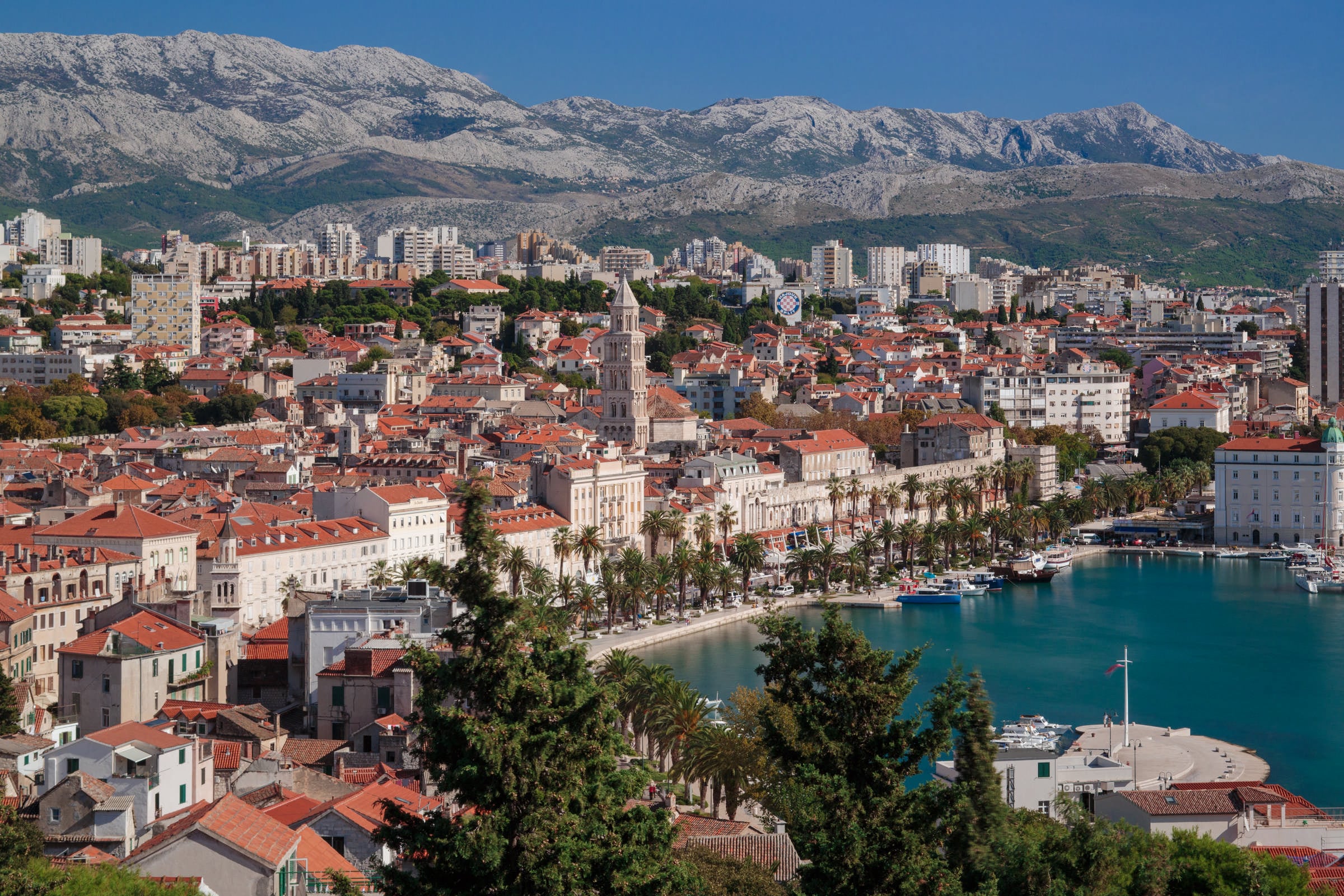 Split by Mario Romulic
Split by Mario Romulic
All of our brave travellers then went to see Klis. Marcotti offers some practical information:
From Split via Klis (2 hours) to Sinj (5 hours), superb road, but the postal service only operates twice a week. A permit from the commander’s office in Split is needed to visit the Klis fortress; it is not granted to ladies.
Rude.
It would take long to recall the whole of its glorious military history, he says about the fortress, then recalls it anyway. A history lesson later, he goes on to say:
The road, the gates, the barracks, they’re all modern; but the walls, the towers, the ramparts, all retain the picturesque charm of ancient military gear: the mosque was transformed into a warehouse. And there’s a beautiful view to boot. In the village, nestled on terraces below the fort, are several taverns.
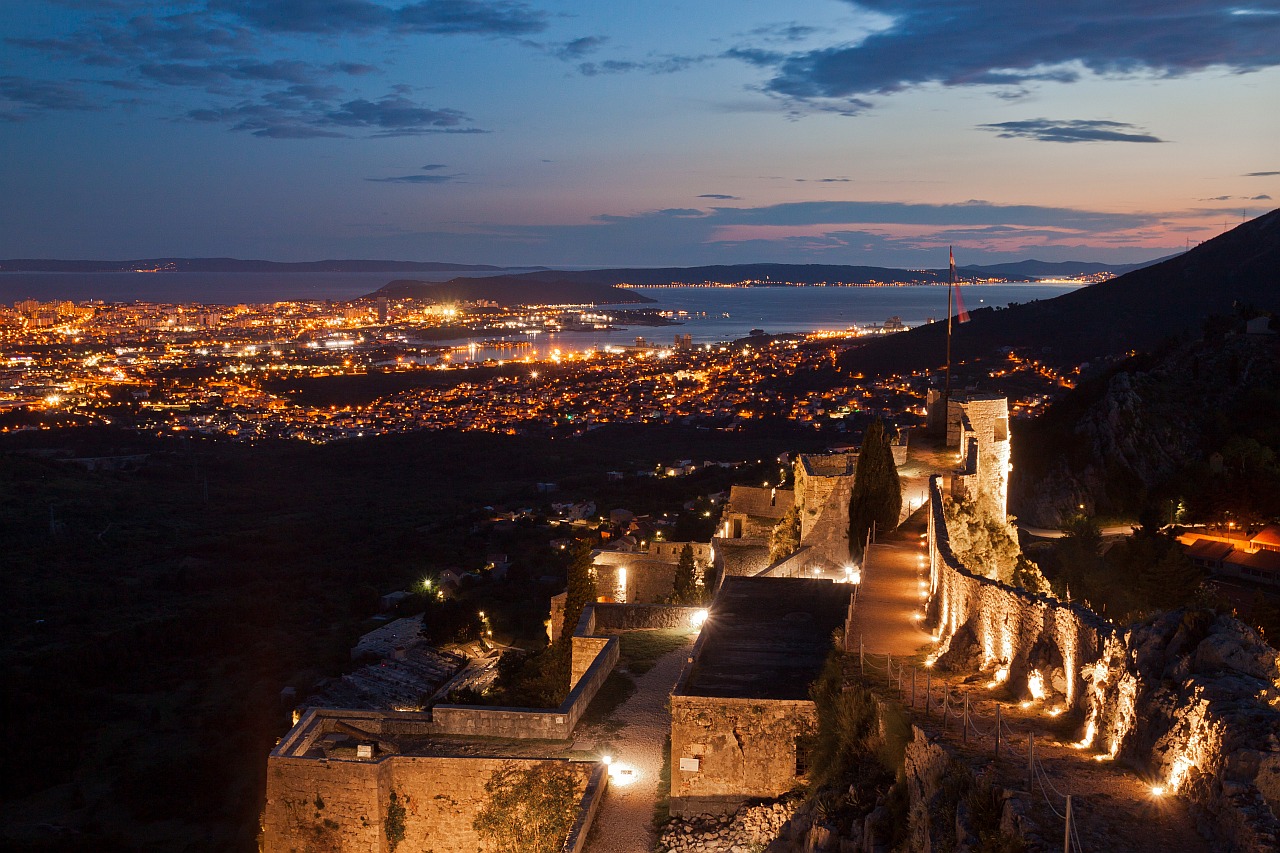 Kliss fortress
Kliss fortress
Countess Rochecantin:
The citadel of Klis, truly an eagle's nest which proudly dominates the valley. The rock it’s built on is surrounded by peaks which would seem inaccessible, if it wasn’t for little pockets of greenery bearing witness to the patient conquest of man over this rugged nature.
And then there’s Spon, bless his heart:
There’s a lack of water and it gets terribly cold in winter. I imagine it’s a harsh penance for a Venetian nobleman to serve here as an officer for two years. 2/10
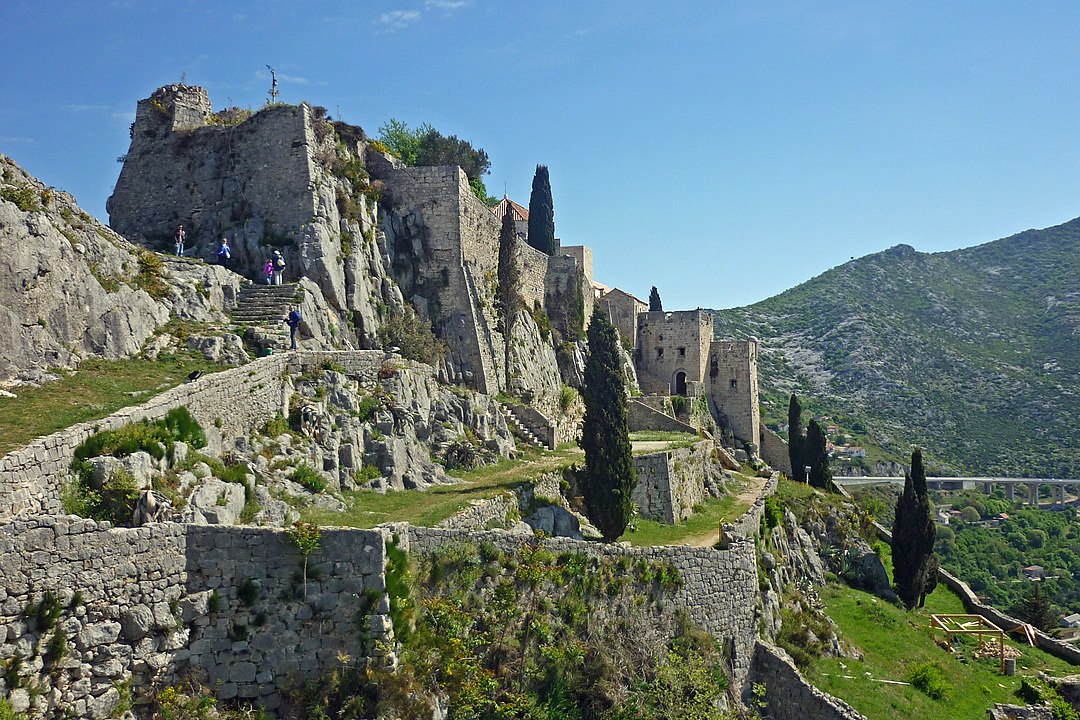 Kliss fortress
Kliss fortress
Marcotti offers a few pointers for towns and islands in the area:
At the mouth of the river Cetina, between Mount Biokovo and the sea is Omiš, a formidable ancient pirate nest. Ruins of the Mirabela and one other castle: excellent wines, pink muscat, even some dessert sparkling wines.
The man truly tells us what we want to know the most.
Šolta isn’t big: its chief town Grohote only has 1200 inhabitants. It’s been renowned for its honey since ancient times; the bees only suckle on rosemary.
Brač is the most important Dalmatian island, in terms of size, population and wealth. They produce vugava, an excellent prošek wine. (...) In the village Pučišće are quarries where stone was sourced for Diocletian’s grand construction in Split.
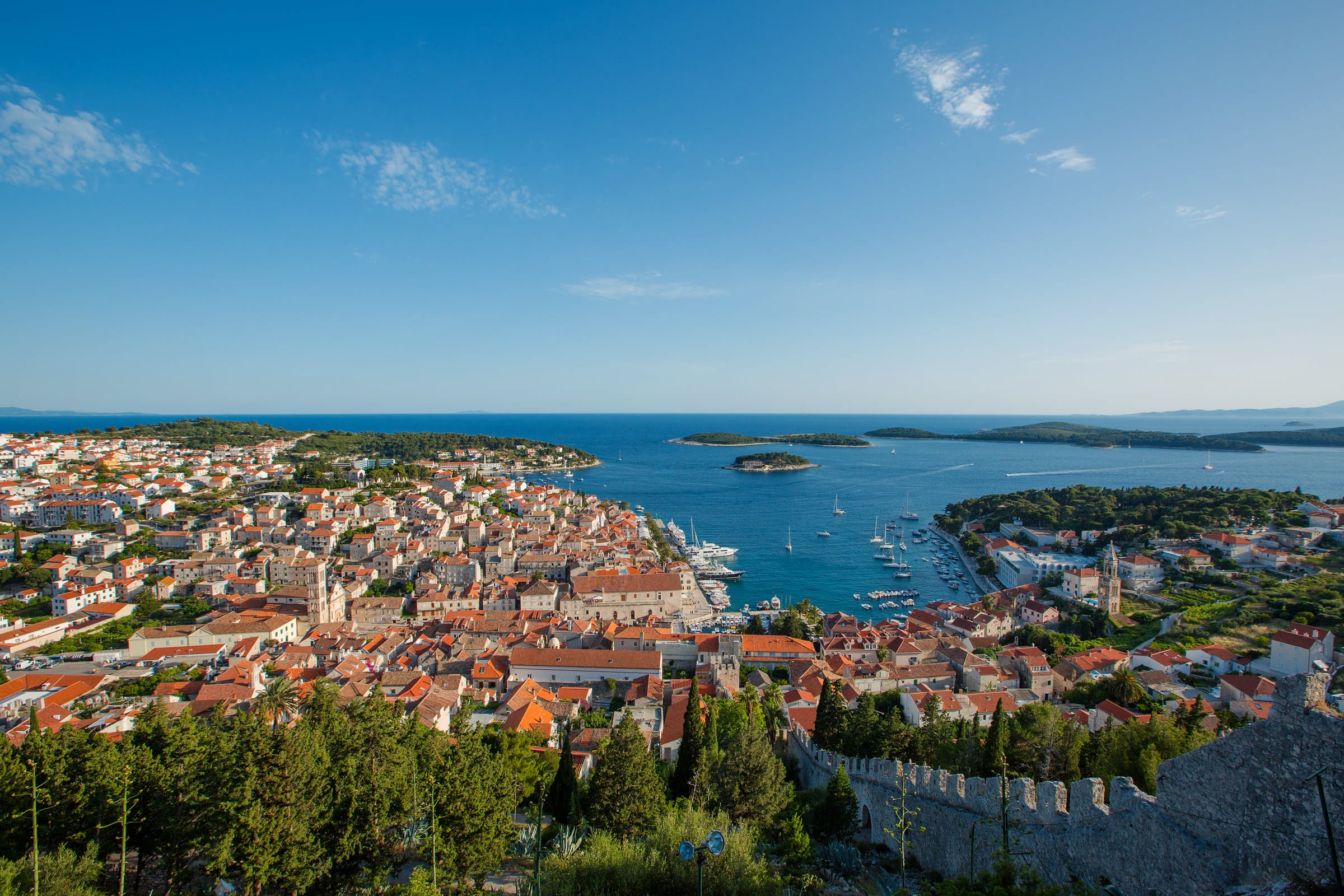 Hvar town by Mario Romulic
Hvar town by Mario Romulic
Hvar: shielded from bura wind by the island’s hills, and from sirocco wind by Pakleni islands, it enjoys a well-deserved reputation as a very favourable climate. Cypress, agave, carob and palm trees thrive there magnificently.
A particular thought stands out in this paragraph. At the time of his visit in the late 19th century, organised tourism was already in development in Croatia, notably in two destinations both mentioned here. Marcotti says:
If direct lines by sea between Italy and Dalmatia were properly established, Hvar town would be a highly recommendable winter destination for the Adriatic regions of the Kingdom, incomparably preferable to Opatija.
According to Spon, Hvar town was an inviting place even two hundred years earlier:
The people of the island, who are three or four thousand in number, have all withdrawn to the town of the same name so they can watch foreigners occasionally dock in their port. So they could receive them with more dignity, they have made there a beautiful pier of marble and stone blocks which lines the semi-circular port.
There is very good bread and very good wine, and plenty of sardines to whet the appetite, with which they also supply Italy and Greece.
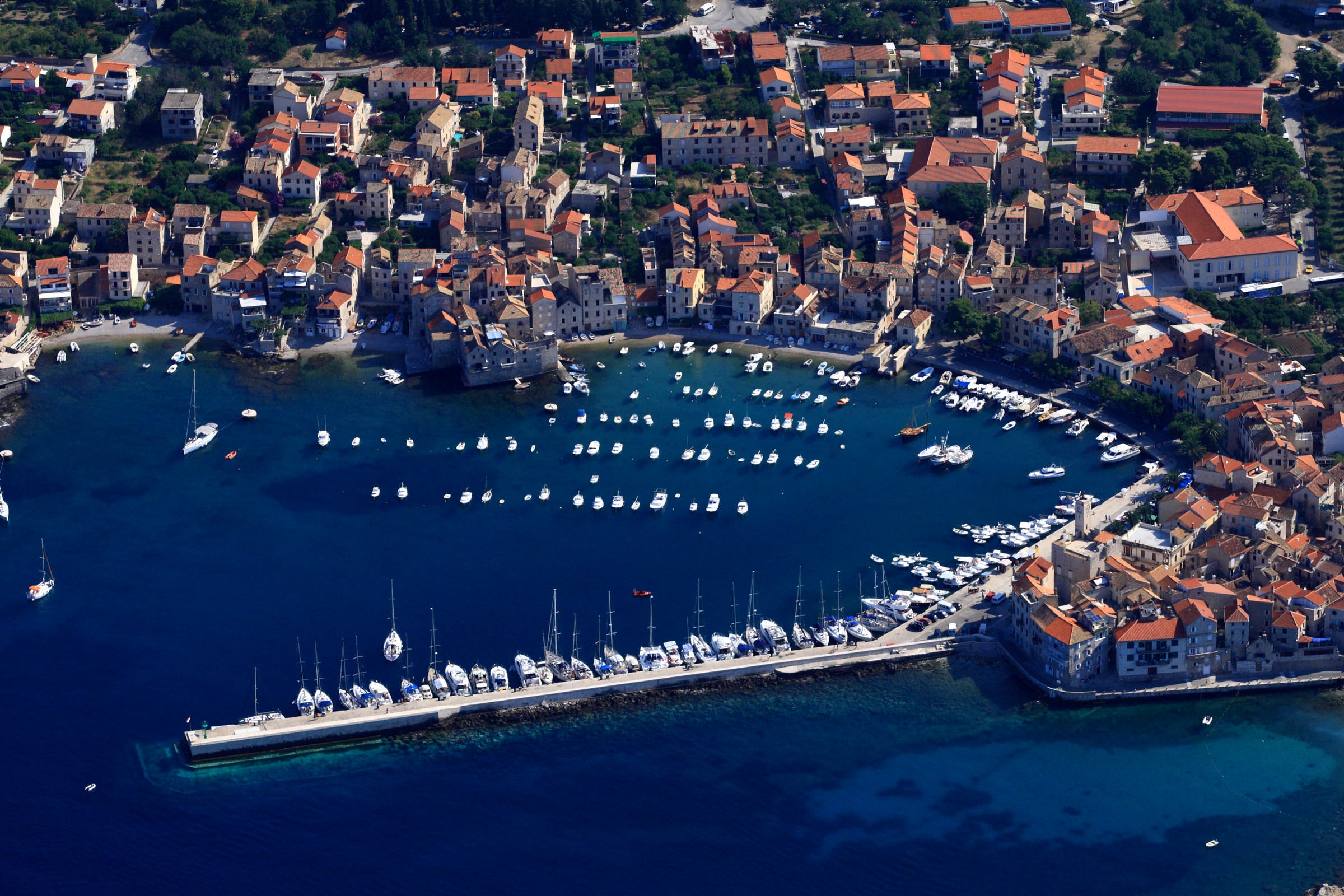 Komiža on Vis island by Mario Romulic
Komiža on Vis island by Mario Romulic
Vis: The island’s vegetation has a distinct southern character, with almond trees, figs, and palm trees. Some excellent wines are the opollo, the Margherita, the prosecco, the gripola, as well as vinegar and brandy. Sardines are abundant in Komiža; anchovies, mackerel, sea bream and snapper are found in all the waters around the island. The suckling lambs are delicious owing to the aromatic pastures of rosemary.
Spon also visited Vis island, but wasn't impressed with the sights:
I won't talk about the fortress, it's just a crow's nest that could be knocked down with ease from the nearby rocks. In the whole garrison there is but one simple soldier who performs the roles of Captain, Sargent and Porter, much like that of Plautus.
He goes to Korčula next, where he learns about jackals:
As this island is covered in woods, it is a haven for several wild beasts. Among them is a certain animal which I am told is built like a dog, but has the cry of a cat or a peacock. If one lights a fire at night near these woods, one can hear a great number of them shrieking and chanting their rabid song, such that those who have never heard them before mistake them for people yelling. It is also said that they dig up the dead to feed on them, and they are good for naught else, but to make some horrid furs out of them.
Next up: Dubrovnik, plus a few places we missed on our way south!
Sources for part II:
Jacob Spon, Voyage de l'Italie, de Dalmatie, de Grece, et du Levant, Fait és années 1675. & 1676., Tome I (Antoine Cellier le fils, Lyon, 1678)
Noé Bianchi, Viaggio da Venezia al S. sepolcro, et al monte Sinai (Remondini, Bassano, 1770)
Giuseppe Marcotti, L’Adriatico Orientale, da Venezia a Corfu (1899)
Alberto Fortis, Viaggio a Dalmazia, 1774 (Croatian edition: Put po Dalmaciji, Globus, Zagreb, 1984)
Comtesse de La Morinière de La Rochecantin, Croisière en Adriatique et en Méditerranée (1907)
Quotes translated from Croatian, Italian and French by the author of the article.




